-
Car Reviews
- Car News
-
Car Comparisons
Latest comparisons
- Chasing Deals
The MV generation of the new Triton has ushered in a new era for Mitsubishi’s workhorse but how does it stack up against six months of long-term testing?
Launched in March 2024, the dust has now settled on the new-generation MV Triton with thousands now dotting Aussie driveways. Plenty of new owners have embraced the much-improved ute at a time when this segment is only growing with more options.
Our initial assessment found that the Triton had become a much more impressive vehicle across most disciplines, but with a significant spike in price the Mitsubishi ute is no longer the bargain it used to be, with price-busting territory now held by the likes of the GWM Ute Cannon and the LDV T60.
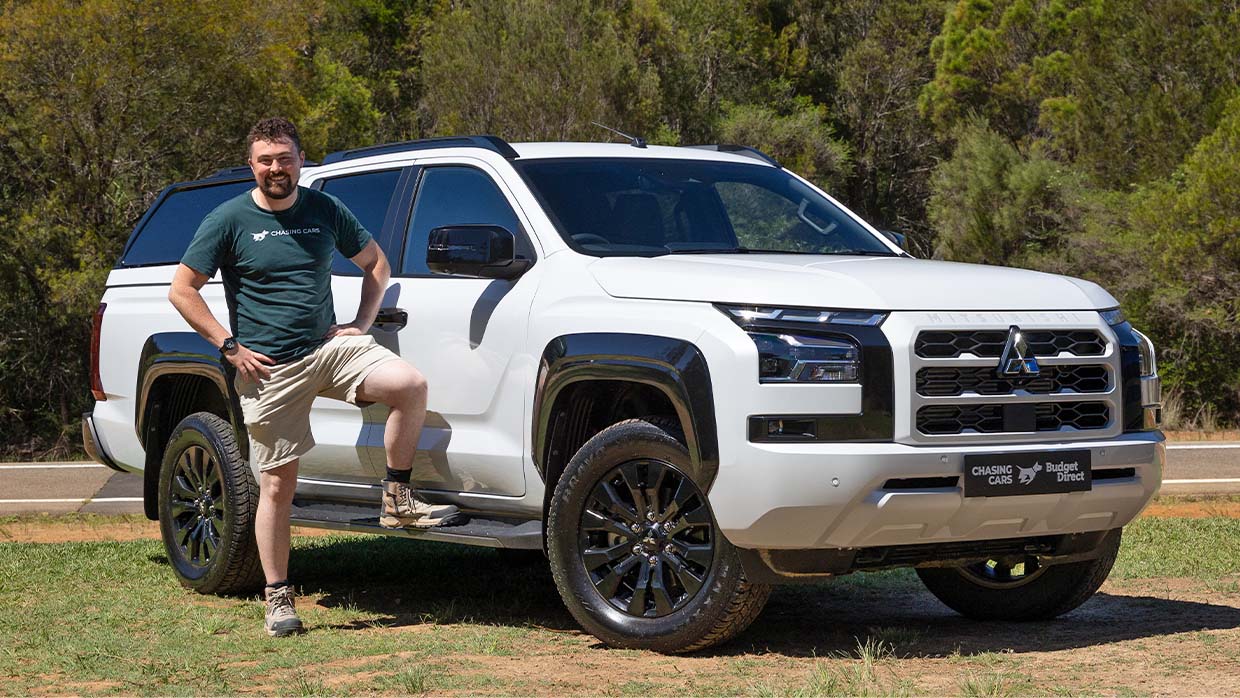
Raising prices means you need to raise your game to stay competitive, and while the Triton is significantly cheaper than the segment-leading Ford Ranger and Volkswagen Amarok, there is still plenty of competition in the midfield, with the aging Toyota Hilux and recently updated Isuzu D-Max for company.
This being a ute, it’s not just here for a good time but it’s also here for a long time, which means it will also need the competitive edge to compete with the likes of the incoming BYD Shark 6 plug-in hybrid and the Kia Tasman.
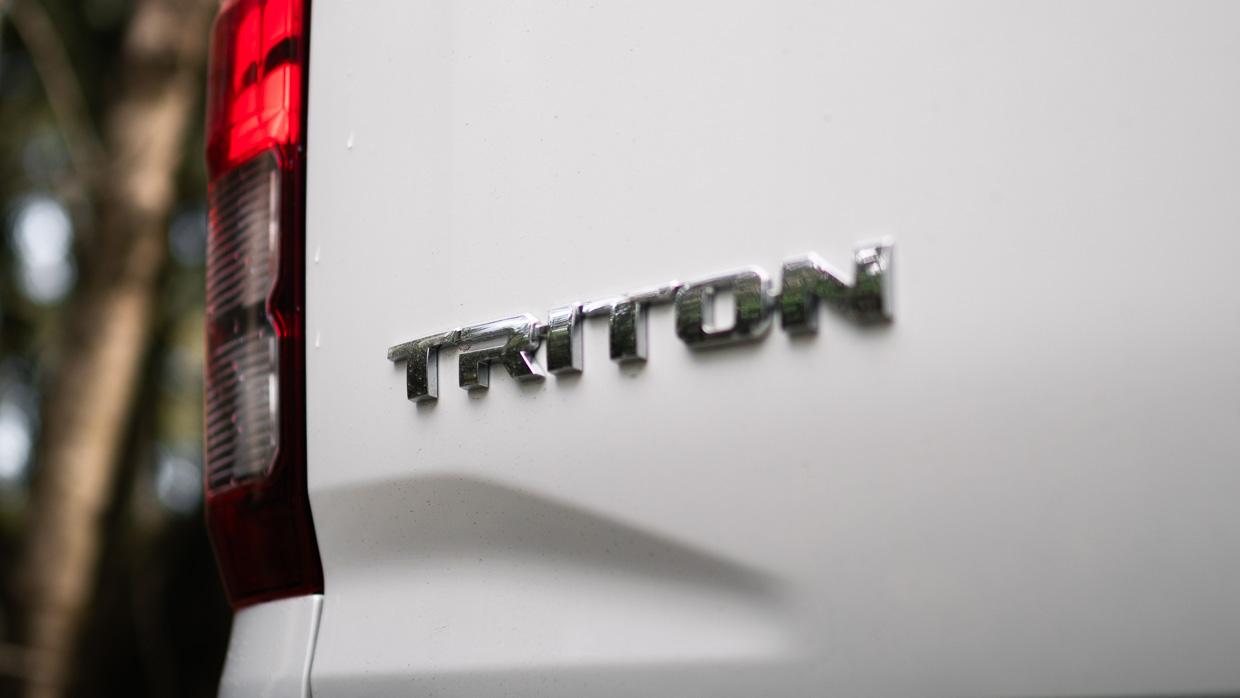
To find out if the Triton has what it takes to be a truly impressive ute, production specialist Tom Place has taken custody of one for the next six months, so make sure you follow along for our comprehensive assessment of Mitsubishi’s long-awaited ute successor.
Surmounting a handful of obstacles is one thing, but prevailing one of Australia’s most renowned 4×4 arenas in near-monsoon conditions? That’s a challenge fit for a Triton.
Every four-by-four enthusiast, actually…. scratch that. Every soul lucky enough to find themselves on our overgrown island needs to visit the Victorian High Country at least once in their lifetime.
The scenery is breathtaking, with the sheer size of this region and versatility of the 4×4 tracks meaning that you’re guaranteed an entirely different experience every time you return.
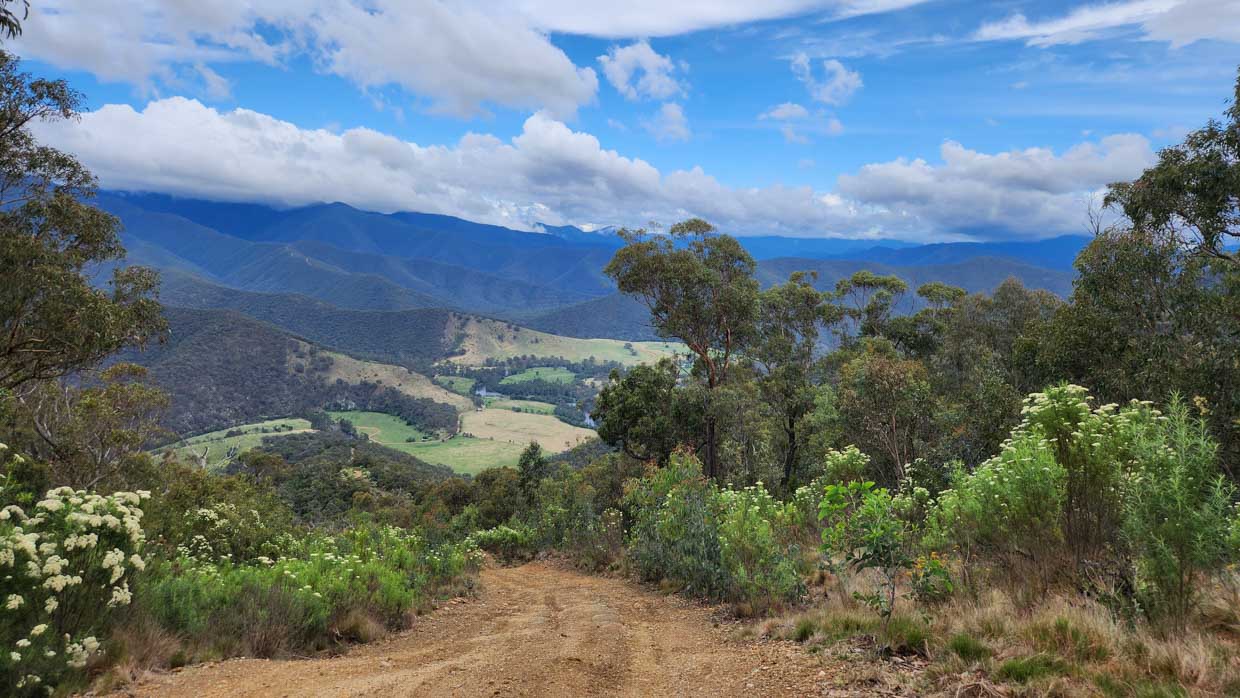
After being mighty impressed by the Triton’s off-road capability in our previous testing, I knew it was a place I had to test this new dual-cab ute – entirely in stock form.
Incredibly, the plan eventually made it beyond the idea stage, a fact I was thanking myself for as my mates and I snaked our way up the highway from Melbourne and enjoyed a beer at the local brewery in the beautiful town of Bright, before pushing on to set up camp at Headrace Flat Campground.
Although we studied the radar over lunch the previous day, it was still a bit of a surprise to see the sudden show of force as the rain and heavy fog drifted in overnight.

But we’re here now, aren’t we? There was nothing more to it than to wipe off our wet swags, roll them up and prepare for the day ahead.
I want to emphasise that our long-term Triton remained entirely stock for the journey but that didn’t mean we couldn’t make some changes to help ourselves.
The main one was the tyres, with the previous driver (not me, officer) tearing up the rubber on some rocks prior to my custodianship, Mitsubishi was nice enough to supply us with a new set, along with an additional mounted spare.
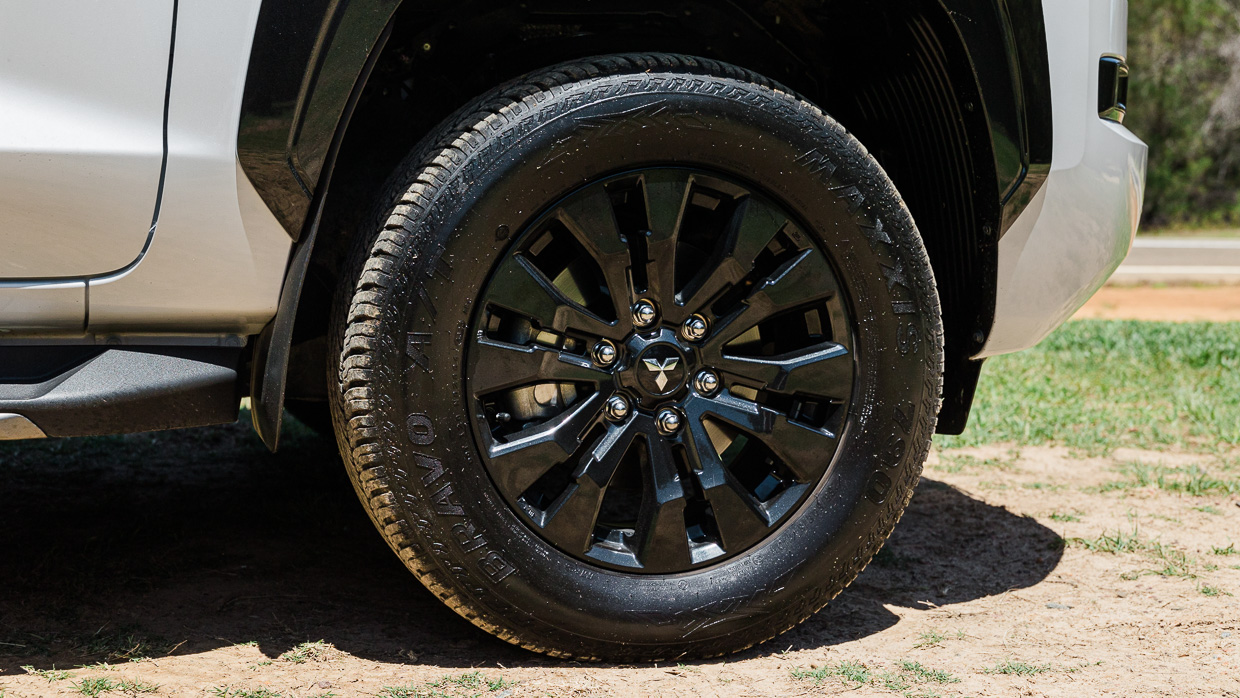
The latter was a specific request as although the Maxxis tyres are stamped as ‘all-terrain’, the common eye and even Mitsubishi’s brochure would suggest these are more of a ‘highway terrain’ grade of rubber, which naturally means they’re less puncture resistant.
An extra 20L of diesel was thrown on board in caution of the Triton’s small-ish 75-litre fuel tank and unknown efficiency after long periods in low range. It was only once my tyre hit the dirt that I realised I also should’ve brought along a bottle of AdBlue.
It’s important because the Triton flat-out won’t start once the 17-litre tank runs dry, but that wouldn’t happen to a lucky guy like me, would it?
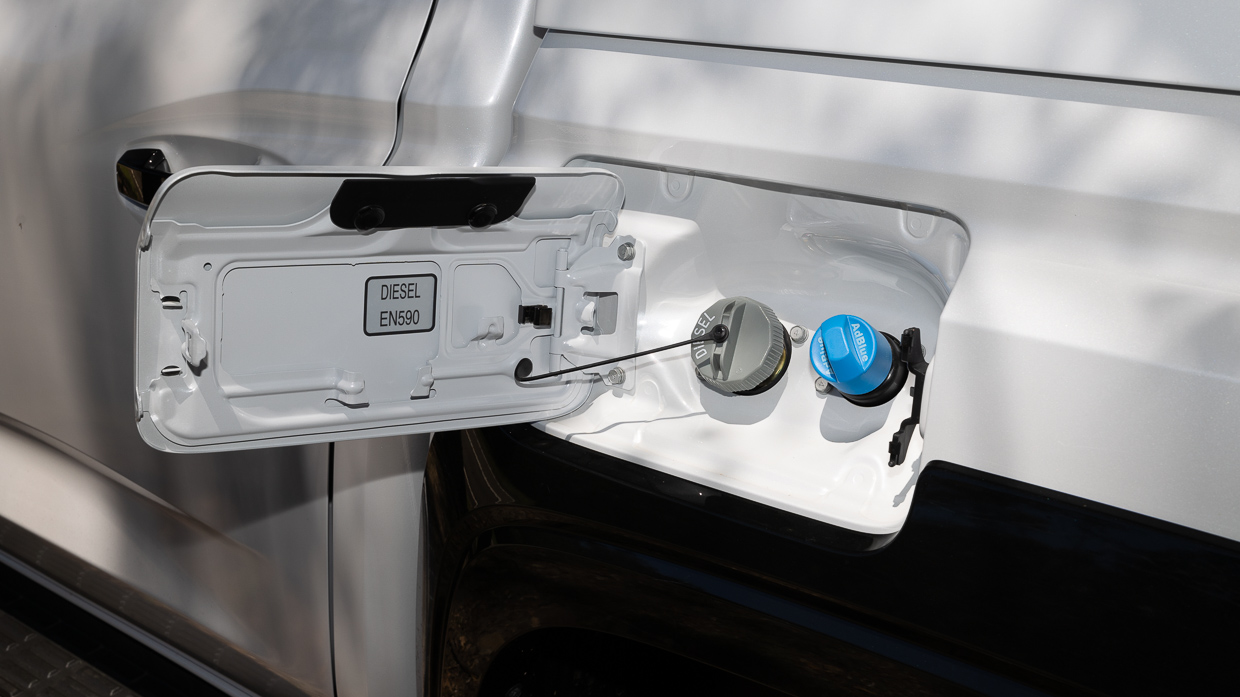
Day two started slow as we began our gradual descent up into the mountains, where I found myself thanking Mitsubishi engineers for only widening the track of the new-gen Triton by 50mm as I crawled along skinny mountain roads and a huge fallen tree that had recently been cut in half and left precariously on a slope.
The route we were after however was the Blue Rag Range Track, arguably the destination of the Vic High Country, so we descended back down into the valley to seek out the start of the climb.
Typically classified as a medium-grade track, 35mm of persistent and heavy rail were due to fall over the day, in addition to what had already fallen overnight, turning the terrain into a jagged slip and slide as the light dirt washed away revealing only sharp rocks and thick mud.
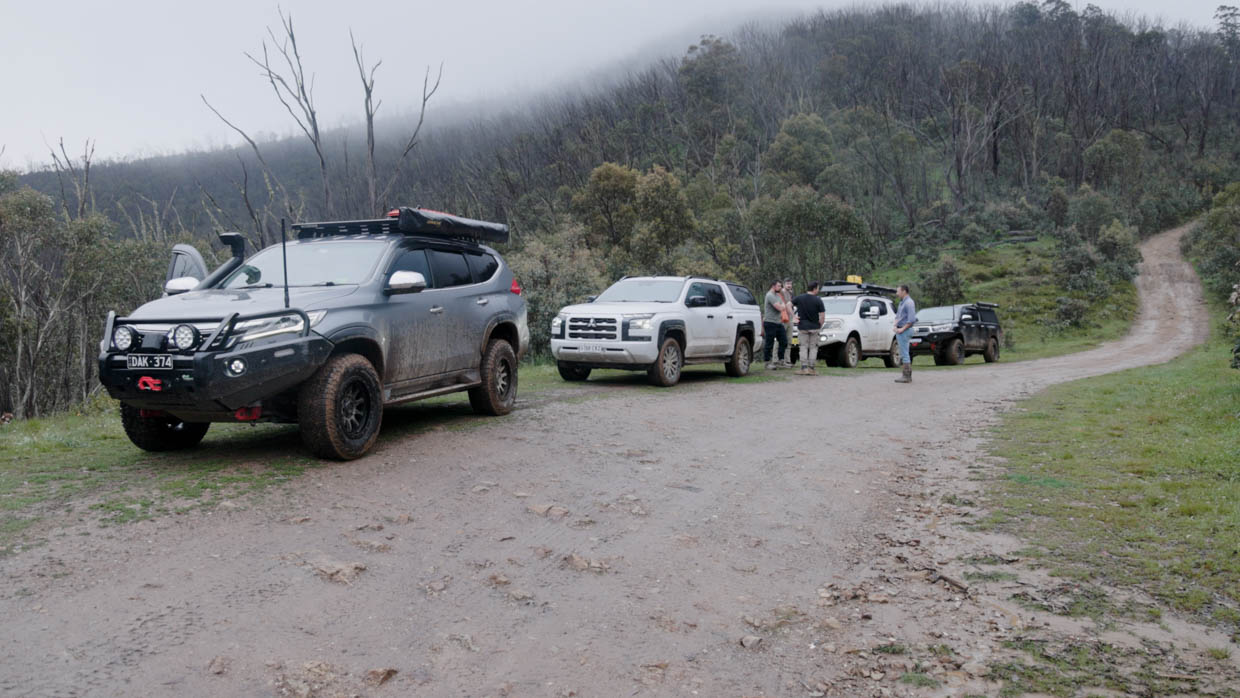
Our pack of four travelled up the mountainside, taking each rollover one by one, maintaining a safe distance in case one of us began to slide. As we climbed higher, the mud got deeper and the tread of the Triton’s highway tyres filled with mud, with momentum and specific line choice becoming more important by the metre.
Eventually, the Triton reached a rollover it simply couldn’t overcome.
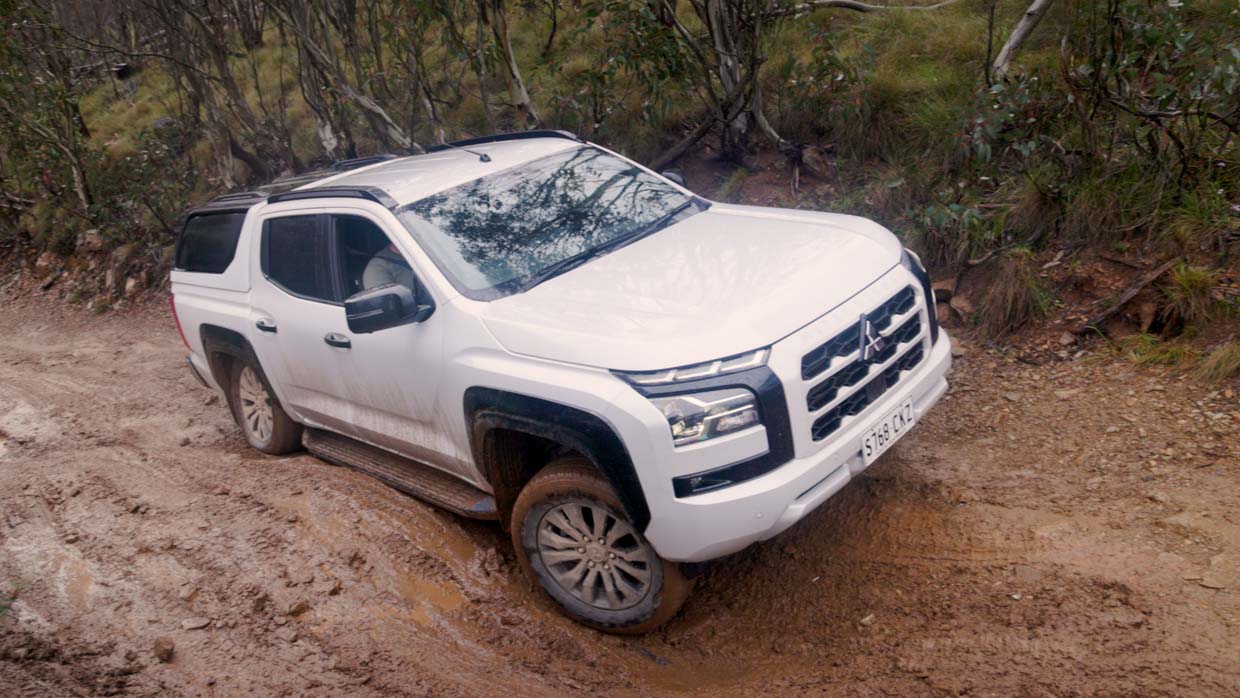
Despite having the centre and rear diff locked, and the ute set in its most aggressive ‘Rock’ traction control setting, the lack of clearance doubled with the uneven footing stopped the Triton from gaining traction.
After a friend kindly threatened my pride with a tow, some careful navigating of lines allowed both of my front wheels to gain purchase on the slippery surface and claw my way out. Boy, I would’ve loved a front locker here!
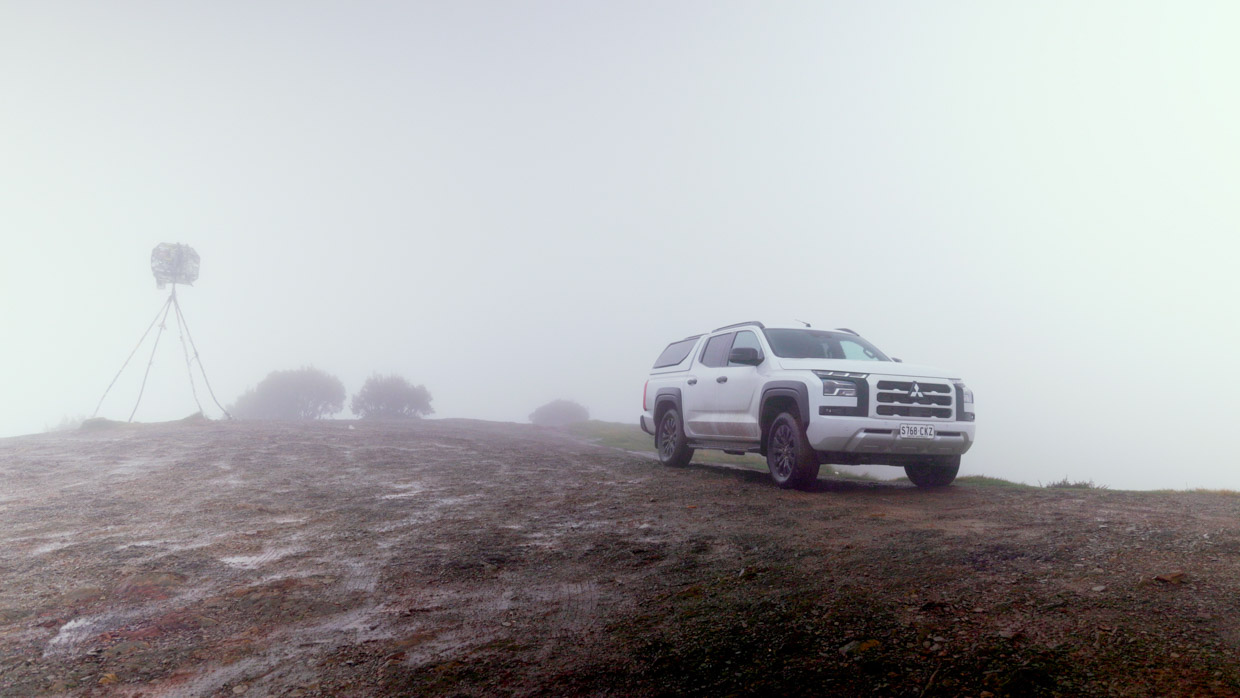
The spectacular views at the top of Blue Rag Range Track were clearly on leave for the day, as the fog made it impossible to see more than a few metres down the hill, let alone the spectacular landscape it’s known for. Still, it was a nice place to fire up the gas cooker for lunch.
It was a welcome rest after a few hours of technical driving but the sky didn’t take such breaks, and as we slid down the same path we just climbed on our way to a distant campground, we found ourselves with a steep path consisting of two clear paths.
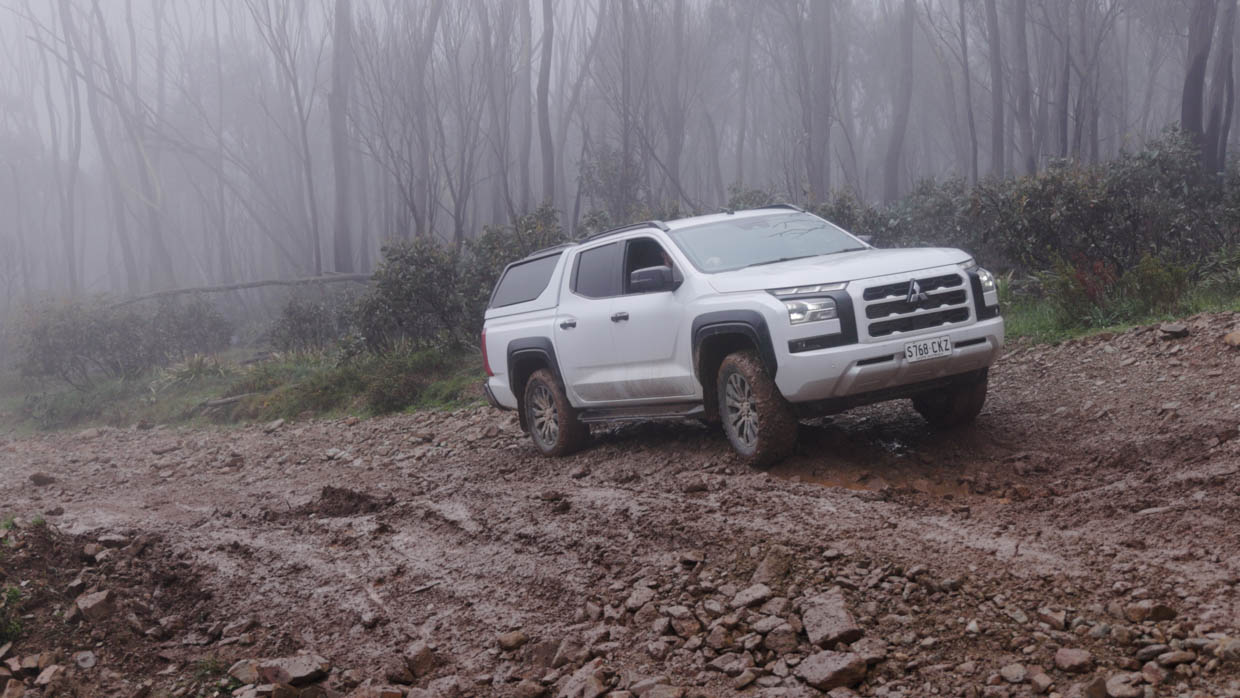
The first, featured rocks that might be too big to clear in the stock Triton, while the other was simply too slippery, even for my mate in their purpose-built rigs wearing aggressive A/T tyres.
I opted to straddle the centreline and hoped the Triton wouldn’t slide to one side, but with the Mitsubishi’s ability to keep the rear diff locked while traction control worked overtime on the front axle, our long term dual cab chugged its way up the hill.
With the sky clearing as we made our way to camp for the night, our collective of dirty 20-something men began cutting firewood for the night and laid out a proper campground.
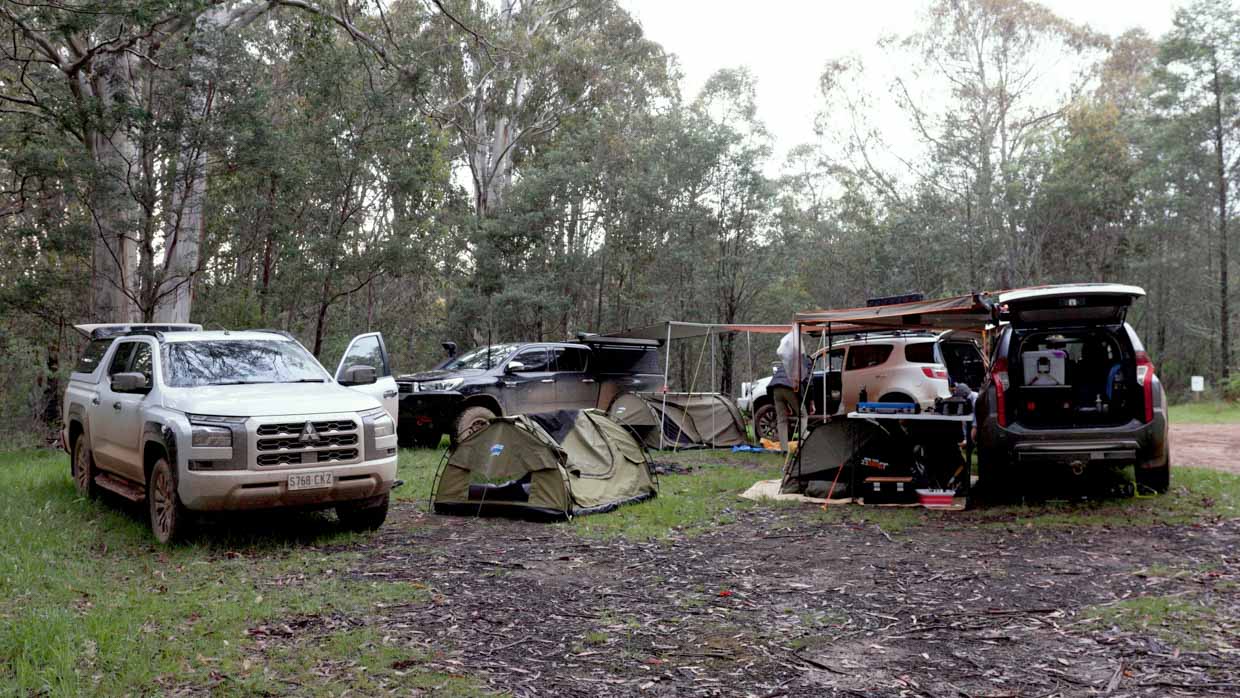
You really forget just what true silence is until you’re out in a place like this. It’s a real shock to the system that could be further from my busy working life and even busier home life, with a young and growing family at home, who I hoped to bring along next time.
It’s a reminder of why people love 4x4s, the best of them can take you to otherwise unreachable locations and witness these gorgeous parts of the world that have yet to be ruined by the insatiable needs of our society.
That doesn’t mean all the comforts of home have to be left there, and demonstrated by my experienced adventure-loving friends who set up their elaborate cooking and sleeping setups for the night.
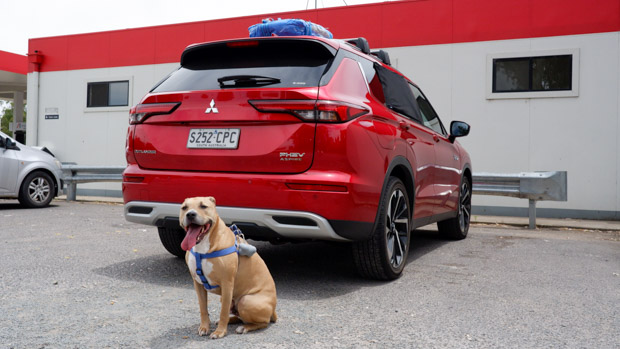
I couldn’t help but think back to my old Mitsubishi Outlander PHEV long-termer, which featured a 20kWh battery that you could tap into via a series of three-pin sockets.
Conversely, the diesel-only ute doesn’t even have a 12-volt ciggy lighter in the tray; and despite years of rumours and half-conformations, Mitsubishi still hasn’t green-lit the Triton’s PHEV option. Meanwhile, the BYD Shark 6 is taking the country by storm and Ford looks to legitimate plug-in utes with its incoming Ranger version.
Mitsubishi, once the only brand to cut through to Aussie buyers with PHEVs powertrains, is falling behind.
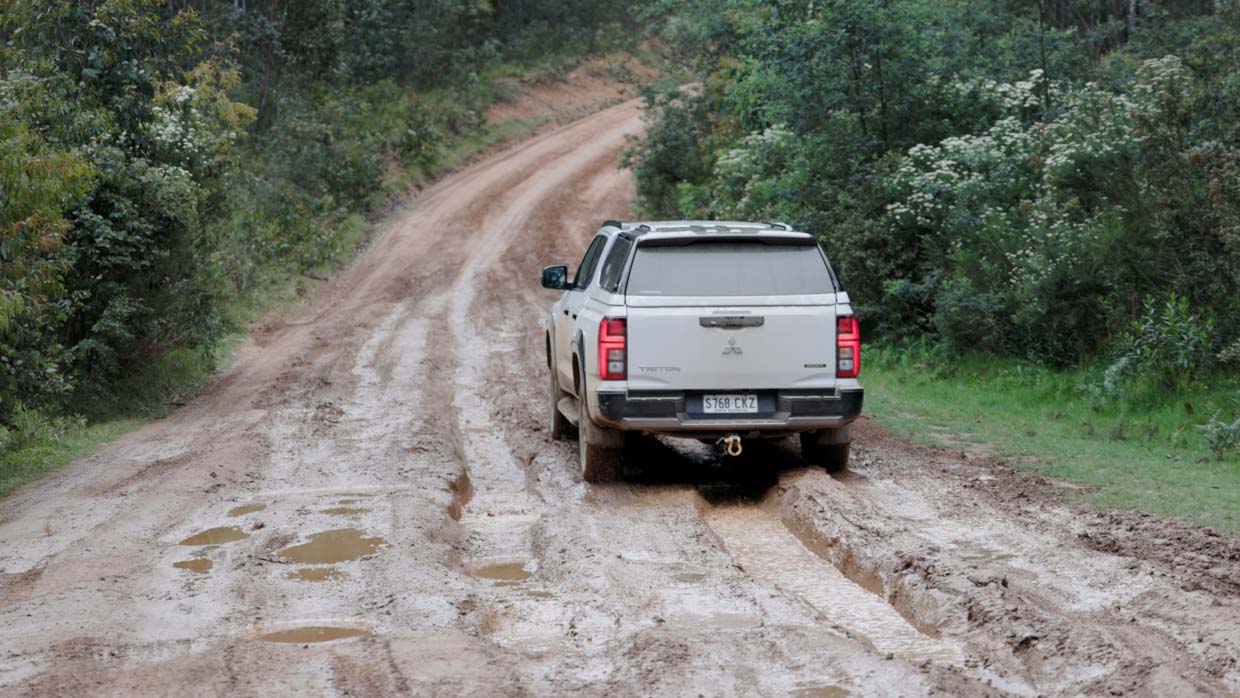
As the sun rose on what would be a far more scenic day, the crew packed up for what we decided would be our final day; cutting short what we originally planned to be a four-day adventure. The weather had taken its toll on our cars and ourselves; we didn’t need to push our luck further.
Case in point was the swampy long road out of the campground.
While the road in had been pretty straightforward, we needed serious momentum to climb some of these hills and on a few occasions, a few of us were almost thrown into the bushes, as the deep track crisscrossed unexpectedly.
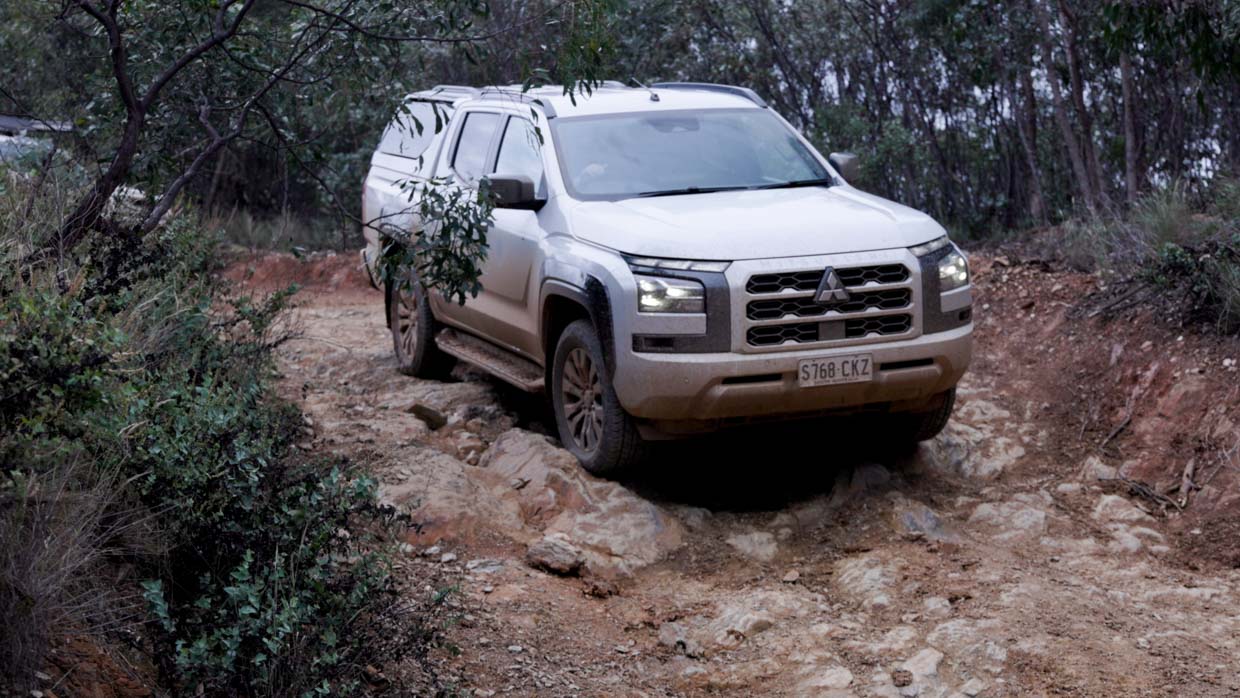
But comes up, must come back down again and our route towards civilisation wouldn’t be an easy one.
The descent on Conway Track once again challenged the 228mm clearance of the Triton, requiring me to pick lines closer to the scrub (often at the expense of the paintwork) to thread my way down.
The Mitsubishi earned back brownie points with its well-calibrated hill descent control that allowed me not to ride the brake pedal for 45 straight minutes, so by the time we crossed King Will Bridge I still had some feeling in my foot.
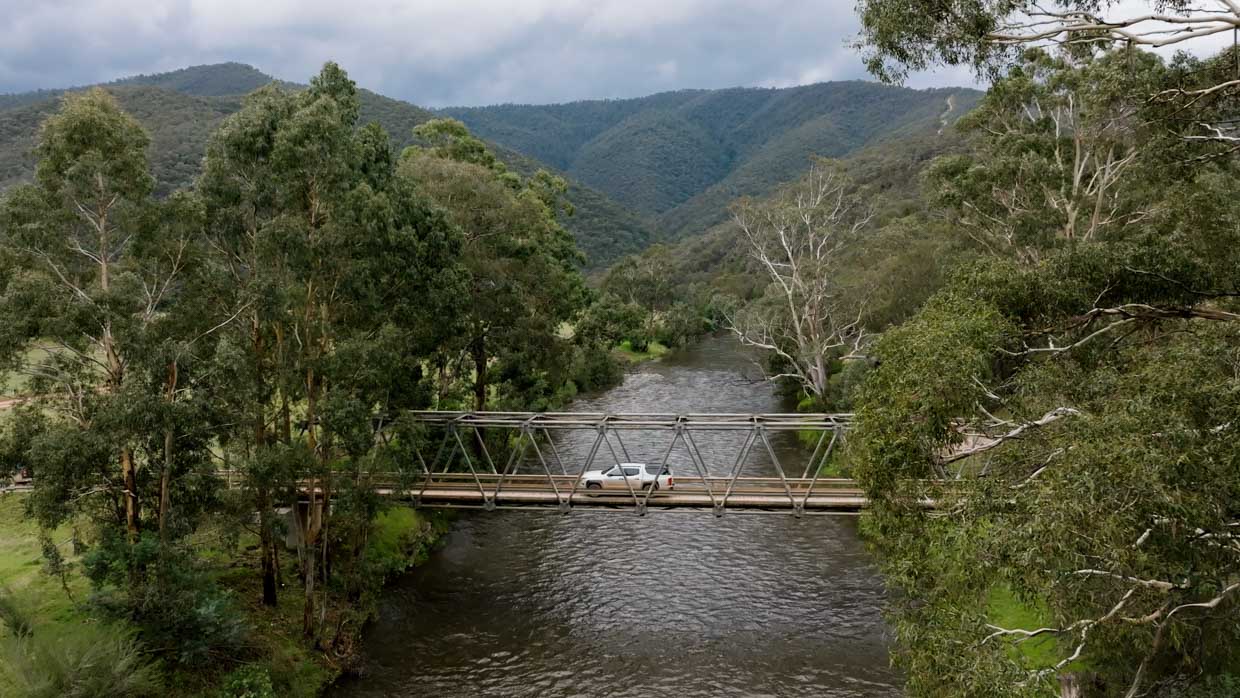
A key reason we decided to cut our journey short was we originally planned to cross the Crooked River Track, but with the relentless rains, we struggled to so much as walk across the first crossing, let alone drive.
To make matters worse, the Triton is presently without an official wading depth rating, giving us little to no guide on how far we could venture. Some signs such as a high alternator position and the air intake feeding into the top of the guard suggested it would be capable, but this was in no way a guarantee.
Even still, we did attempt one river crossing but what started out shallow quickly turned far deeper. That’s it, I’d had enough.

Our beer at the end of the rainbow was had at the iconic Dargo Pub, an establishment first opened in 1898; with walls that are etched with signs of abuse and human achievement in equal measure, detailing every day of that long history. It’s yet another reason to venture into this beautiful part of the world.
My Triton GSR sat outside among a group of highly modified, adventure-worn 4x4s with new scratches on the side steps and rear bar to tell its story.
I’m starting to miss this ute, and I haven’t even lost it yet.
On paper, it’s an absurd comparison but it’s one that Zak and I make on an almost daily basis. It was time we made the winner official.
A circa-$17,000 difference separates the driveaway price of my Mitsubishi Triton GSR and (now former staff journalist) Zak Adkins’ Ford Ranger Wildtrak, and I’m generally of the opinion that the Diamond brand makes a far better value play than the Blue Oval does.
For starters, the Mitsubishi Triton ticks all the benchmark boxes with its 3.5-tonne towing capacity, heated leather seats on the as-testest GSR grade and a permanent 4×4 system. It’s left me feeling mighty impressed in my first three months with the ute.

But even I had to admit that the Ranger shows a strong hand. I’ve driven this model extensively on- and off-road, I’ve towed with it and I’ve lived with it on a daily basis – though not as much as Zak had in his three months with the V6-powered Wildtrak.
Put simply, the execution of the Ranger is off the charts when compared to the Triton – but so it should be, at that price.
So Zak and I set ourselves a challenge, for one week we would swap keys, complete our daily commutes and then take our rigs off-road together to find out if we preferred each other’s utes. Further to that, would either of us prefer the Ranger formula if we were limited to the $66K purchase price of the Triton?
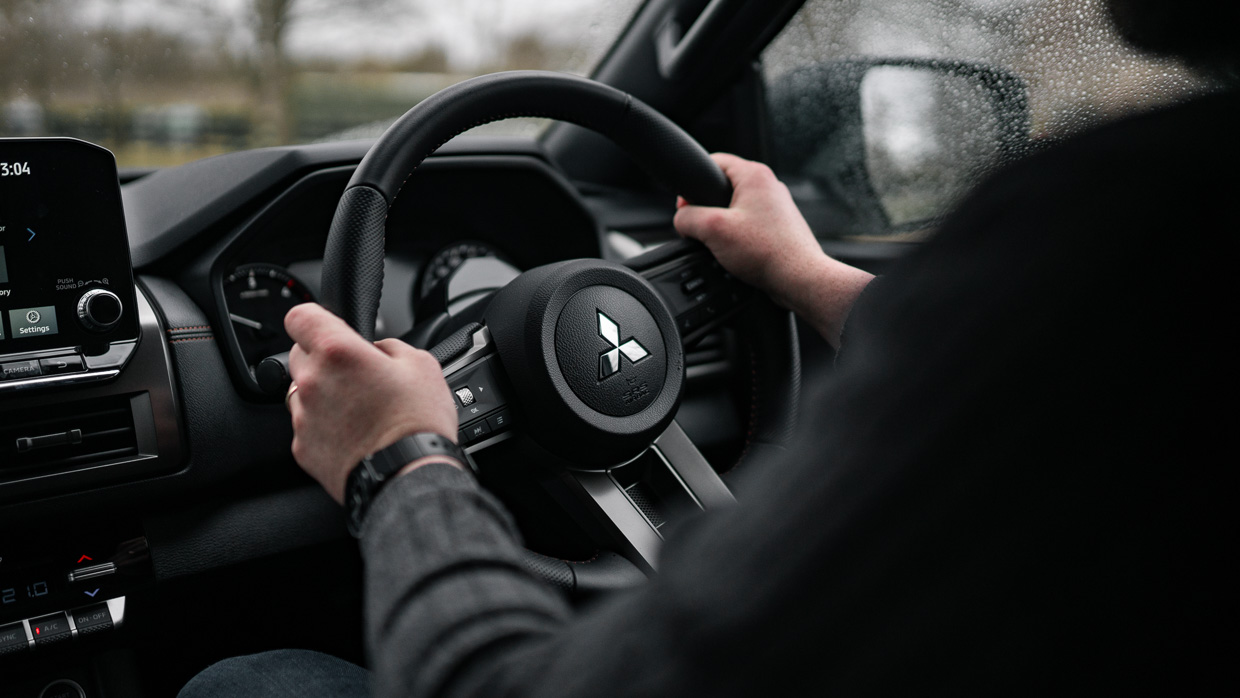
When Tuesday morning arrived and Zak walked into the office with a scowl, I knew I had some convincing to do.
“Mate it’s just so unrefined, that gearbox and stop-start system are insanely jerky”, Adkins said with a shake of the head, with editor Jez Spinks later piling on with “even the indicator stalk feels unrefined”.
And, well…I can’t really argue with any of that.
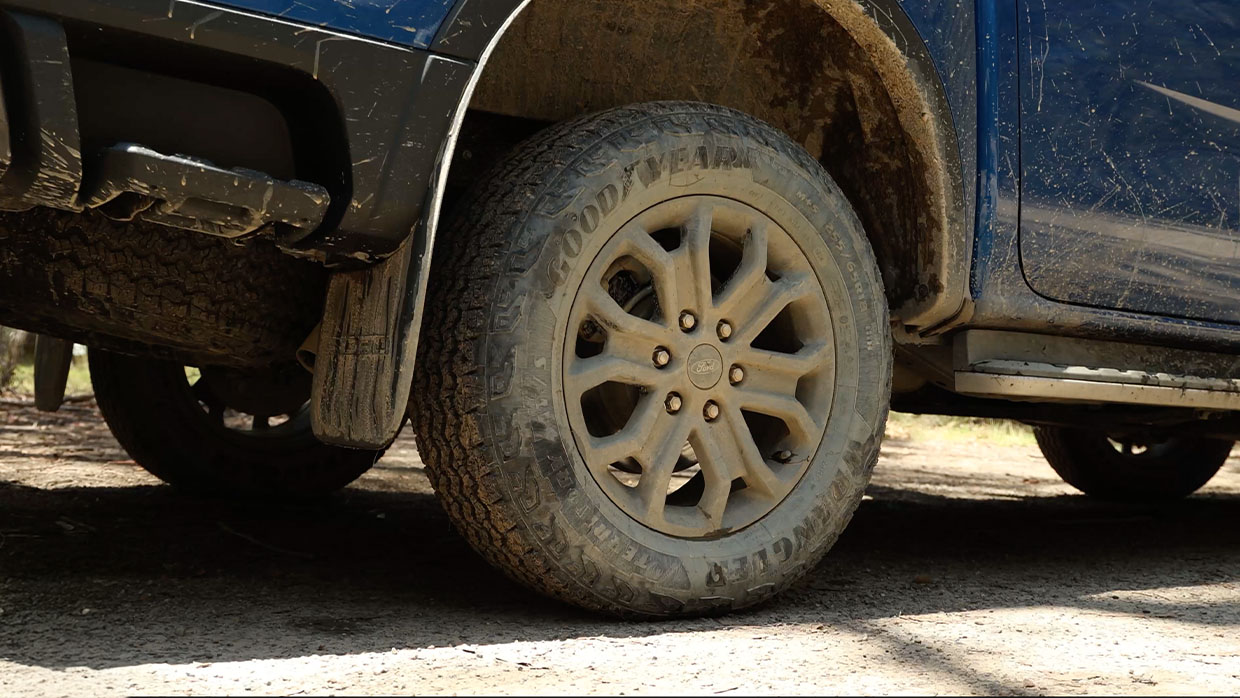
Our 4×4 expert Evan Spence felt like my only friend on team Triton and he knew just the place to win the rest of the Chasing Cars crew over.
Evan led us to his local track in the Blue Mountains and guided us through a series of obstacles designed to test critical factors such as ground clearance, maneuverability, traction control and articulation.
The Ranger Wildtrak wears slightly grippier all-terrain tyres compared to the Triton’s highway rubber, but I wasn’t the least bit worried.
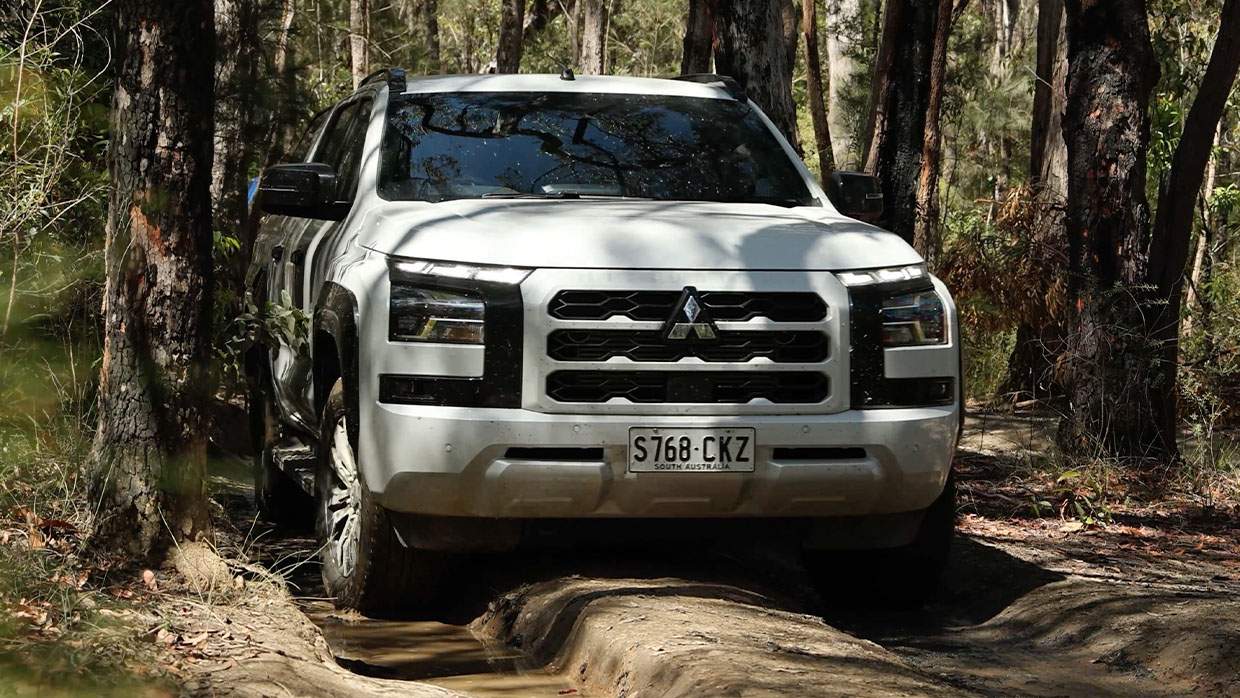
Off-road, the Triton displayed better all-round performance, partly due to its smaller size enabling it to pick better lines, and despite the Ranger having more ground clearance on paper (234mm vs 228mm) the Ford bottomed out far more regularly than the Mitsubishi.
That’s not to say that Ranger wasn’t impressive, both utes confidently walked our obstacle course with ease. Check out our video version of this comparison if you want to see them both in action.
The Ranger’s gutsier turbo-diesel V6 gave it a huge output advantage, with 184kW/600Nm at the ready, in comparison to the Triton’s 150kW/470Nm from its bi-turbo diesel four-cylinder. This ought to make the Ford the better vehicle for towing and touring, but at low speed the Mitsubishi took the advantage.

Evan noted the tragic lack of the Ranger’s most capable ‘Rock Crawl’ traction control mode which Ford reserves only for the $100K+ Raptor variant and the special-edition Tremor. This wouldn’t be such an issue if the baseline traction control settings of the Ranger weren’t quite so lax.
In contrast, the Triton provides a far more democratic approach offering its own Rock mode on everything from the budget-friendly GLX-R ($56,740) and up. Both feature locking rear differentials as standard.
It was a solid win for the Triton but it was now crunch time. Literally, as Zak and I got lunch together to finally come up with a winner.
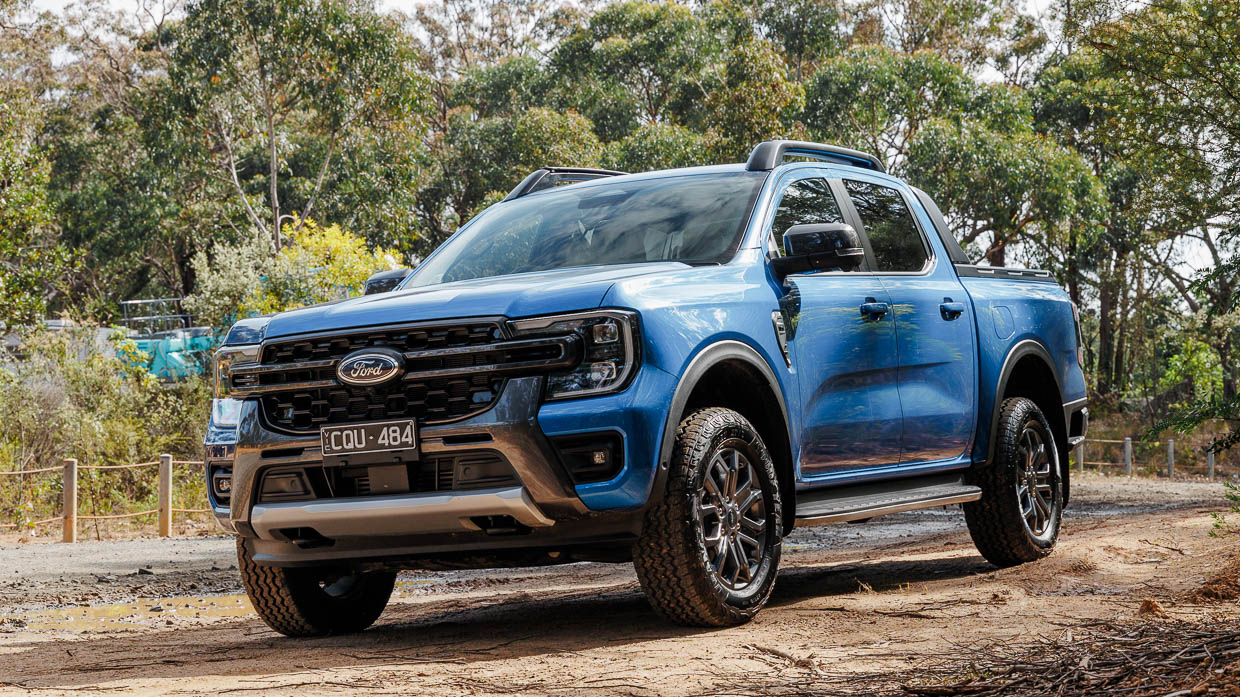
We traded concessions back and forth; on some points we agreed: the Ranger was too expensive and its lane-keep assistance needed to be put back in its box; the Triton also generally didn’t feel polished enough and the driver monitoring system was a pain, even after the latest software update.
In terms of positives, there’s also a lot to be said for the significantly larger back seat of the Triton, which makes it better suited to family duties.
Also, the big chunky buttons and fully separate climate control functions provide fantastic usability, while the premium tech along with fit and finish go a long way to justifying the Ranger’s mammoth upcharge.
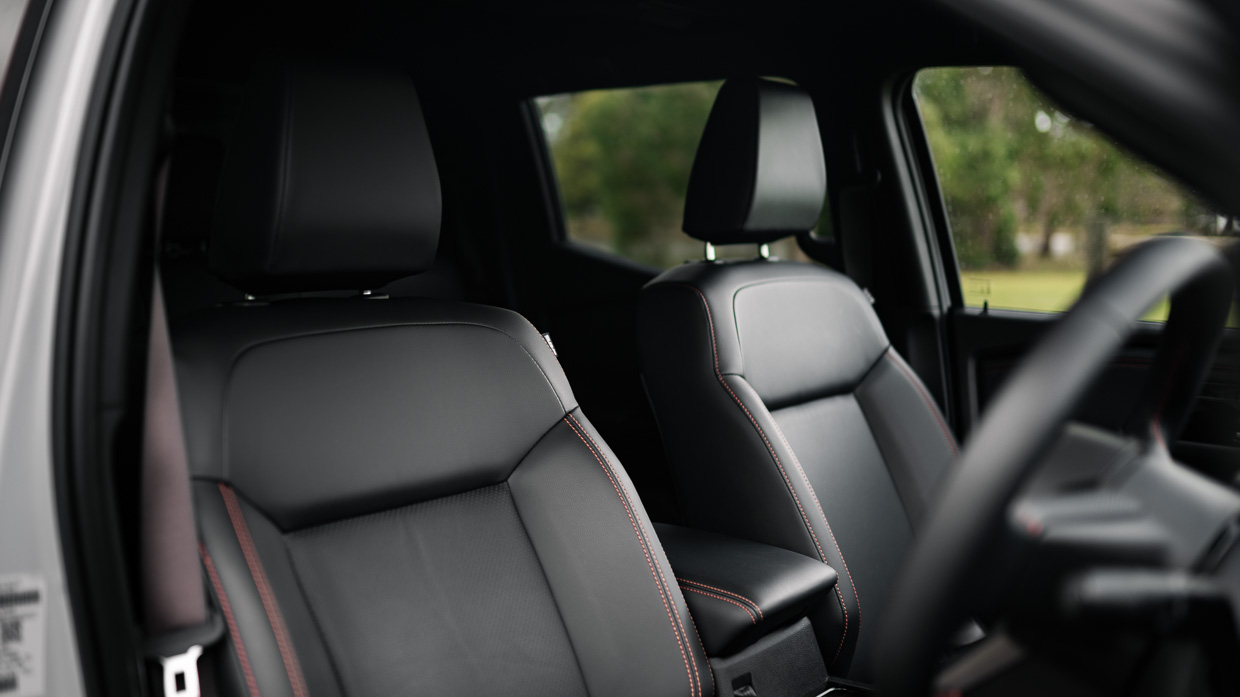
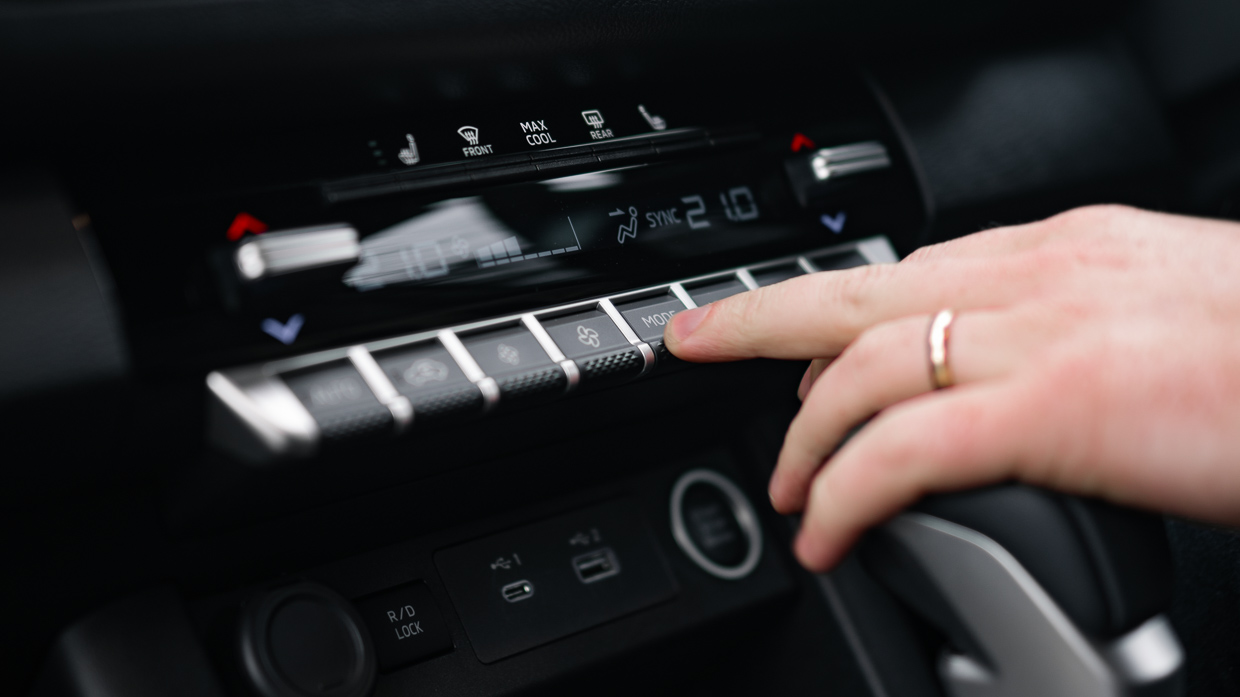
On other matters, we disagreed: in my experience, the Ranger has terrible flat seats that are easily bested by the lovely push and supportive shape of the Triton. I’m also of the opinion that the ride of the Triton is firm at times but perfectly livable. Zak disagrees on both counts.
The price as tested for each of our vehicles is $87,648 driveaway for the Ranger and $72,590 for the Triton, though the latter does wear a $5100 canopy that the Ford does not. We both agreed the price difference ought to be around $10K, rather than the best part of $17K.
As you’ve probably guessed, neither Zak nor I chose each other’s utes in the end. For me, I felt the Triton delivered on all the key fundamentals well enough that the price was justifiable, while Zak saw the value in the extra spend the Ranger required.
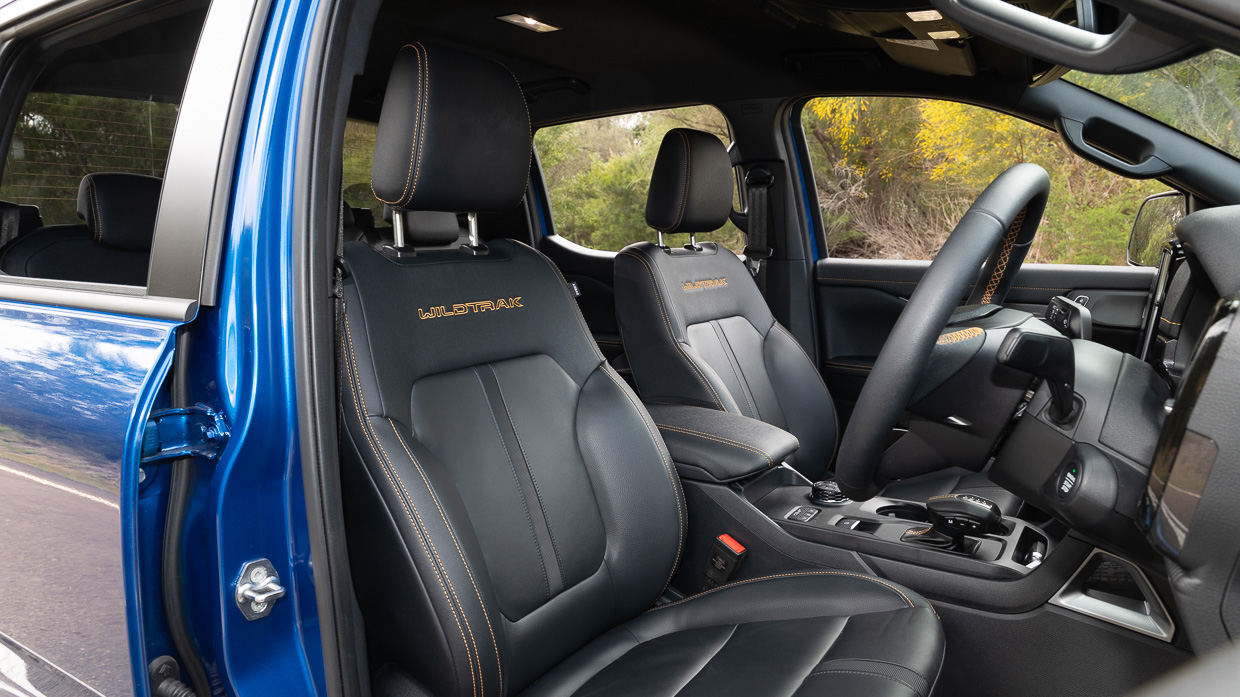
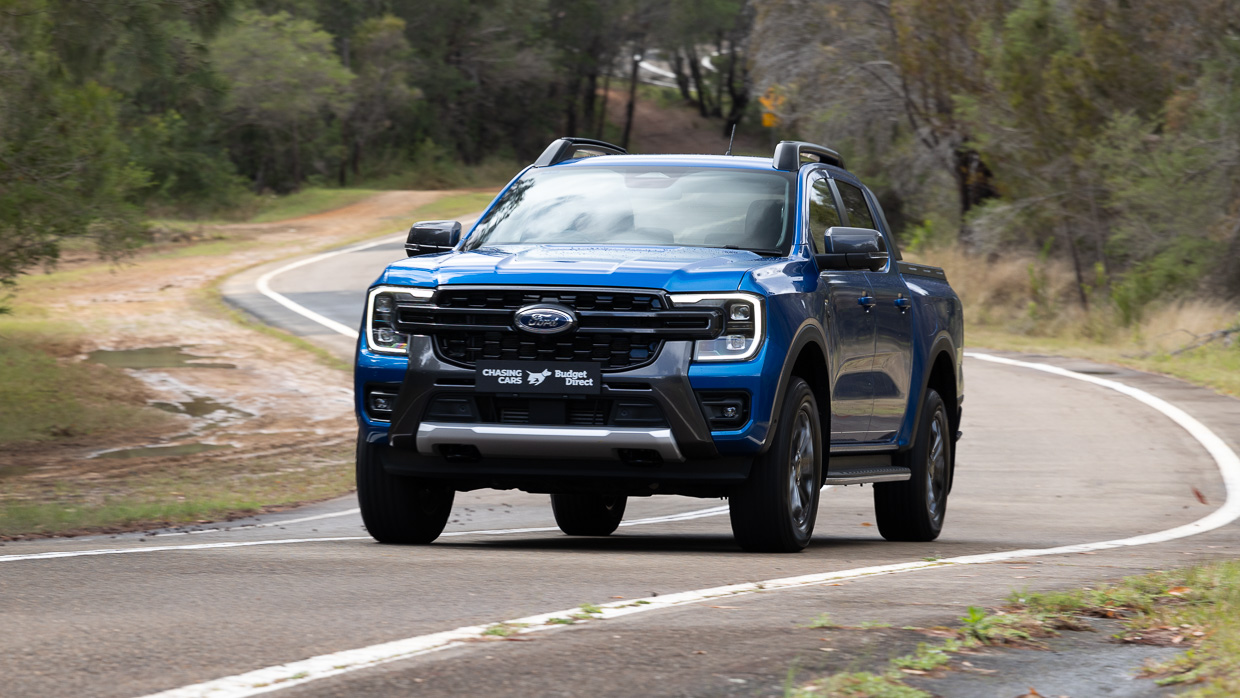
Furthermore, he noted that the Wildtrak was a largely unnecessary grade for most and he’d still stick with the fundamental goodness of Ranger platform, even if he could only afford the base model XL-based Black Edition, which retails for $57,990 drive-away.
You can lead a horse to water…..
The only thing worse than a backseat driver is an electric nanny with a beeper and no licence to speak of, but is living with Mitsubishi’s driver monitoring really the end of the world?
It’s become clear that at some point in the automotive industry, a regulator and a product planner sat in a car together, breathed in the near-silent hum of the engine and simplicity of the cabin and agreed this experience would be far better served with a soundtrack of heinous beeps and bongs.
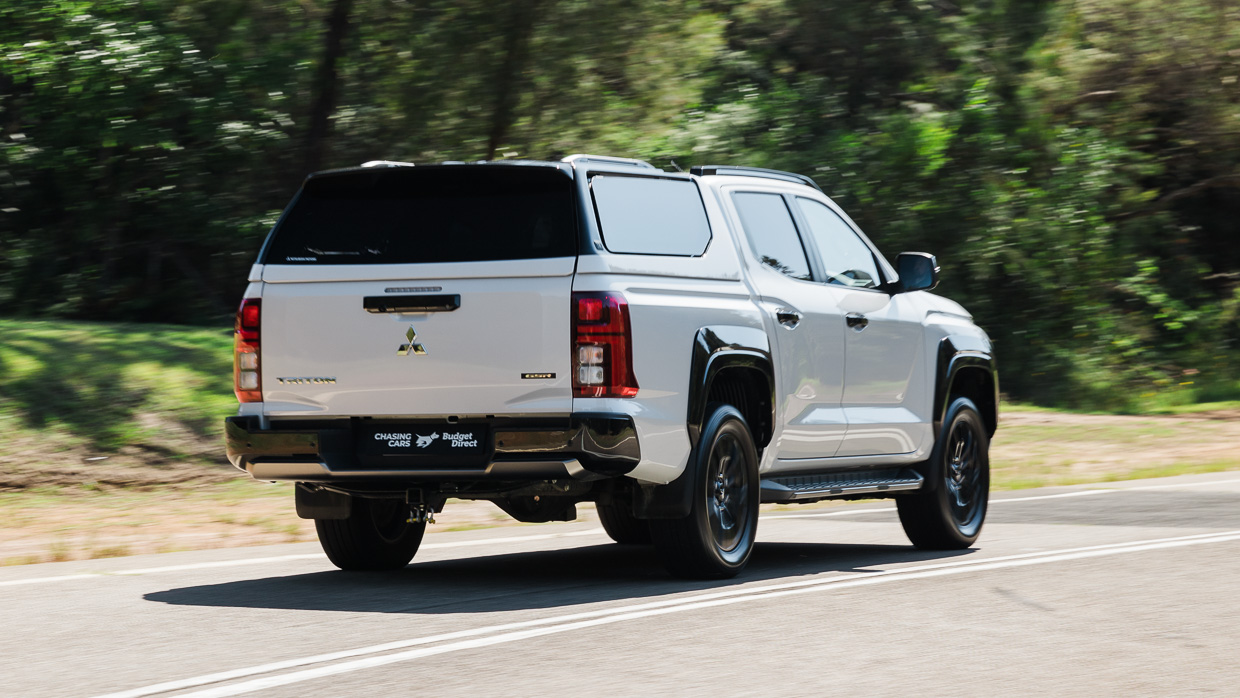
Seat belt warnings, parking sensors, standard mechanical warnings, low temperate alerts and so many more… these alerts have crept in as sensible measures but I’m a strong believer that we are approaching ‘beep saturation’; a point where the driver is audibly assaulted so frequently that they pay attention to nothing at all.
Such a thing only really happens with poor implementation and that is absolutely the case with the Mitsubishi Triton’s driver’s monitoring system.
Fortunately for me, our long-term Triton has been equipped with the latest update that was quickly (in car manufacturer terms) put together by Mitsubishi after an uproar over its poor calibration at launch.
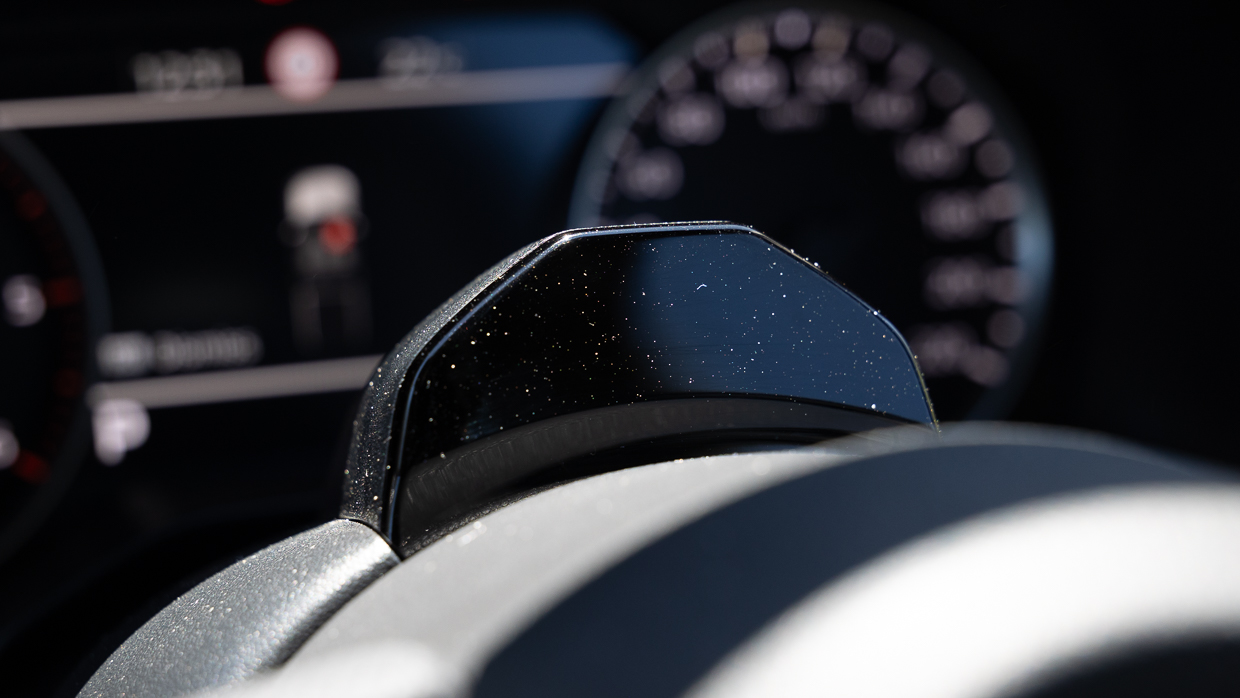
Is it fixed now? Well, mostly.
In the past, the Triton’s driver monitoring system had two reasons for sounding its infamous ‘beep’: the first was that it noticed you weren’t paying attention, and the second was that the sensor was obscured in some way, prompting a ‘driver attention monitoring system disabled’ warning bong.
Mitsubishi has dulled the sensitivity on both fronts, with the driver monitoring now disabled in off-road modes (low range and 4H with a locked centre diff) and it’s generally a lot easier to live with day to day.
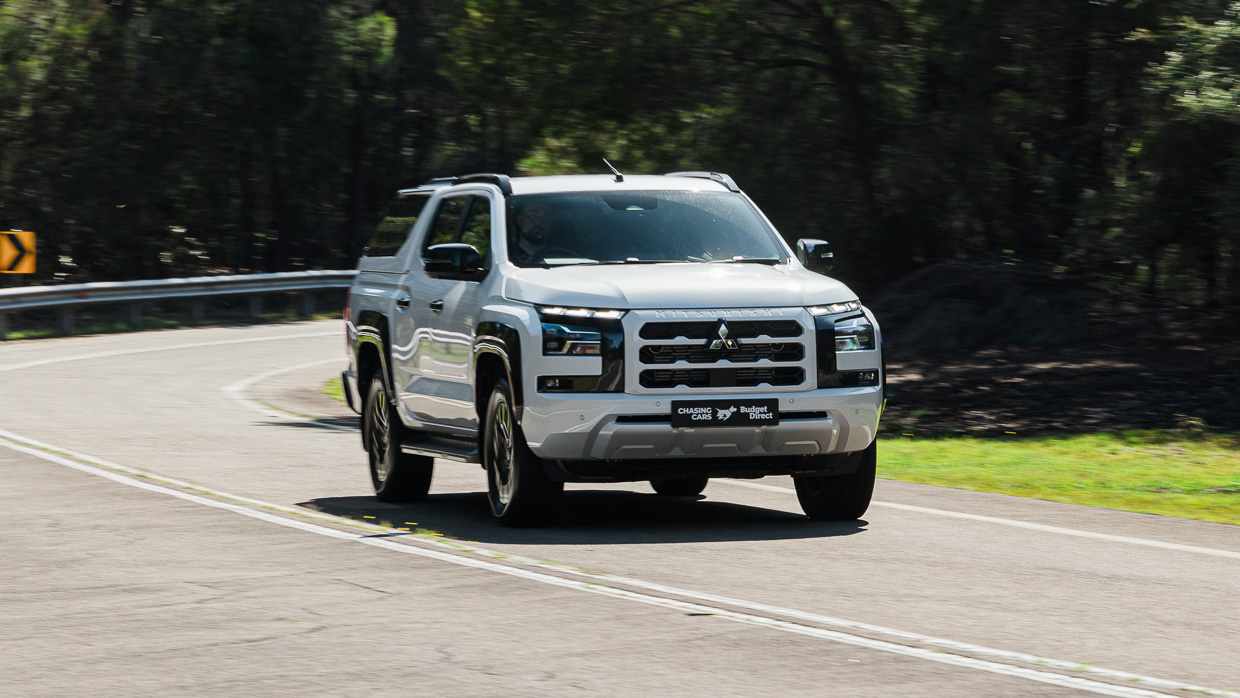
It’s not perfect though. The Diamond Brand insists that it must work within the bounds of the guidelines set by ANCAP but, regardless of who is at fault, the calibration is still far too annoying.
I’ve had a few thousands kilometres behind the wheel at this point and I’ve come to a firm conclusion: the system fundamentally fails at its job.
Say you’re using the touchscreen and a warning bong sounds, you’ve now stopped what you’re doing to see what the noise is about and then returned to the task at hand. The end result is that your eyes are taken off the road for longer.
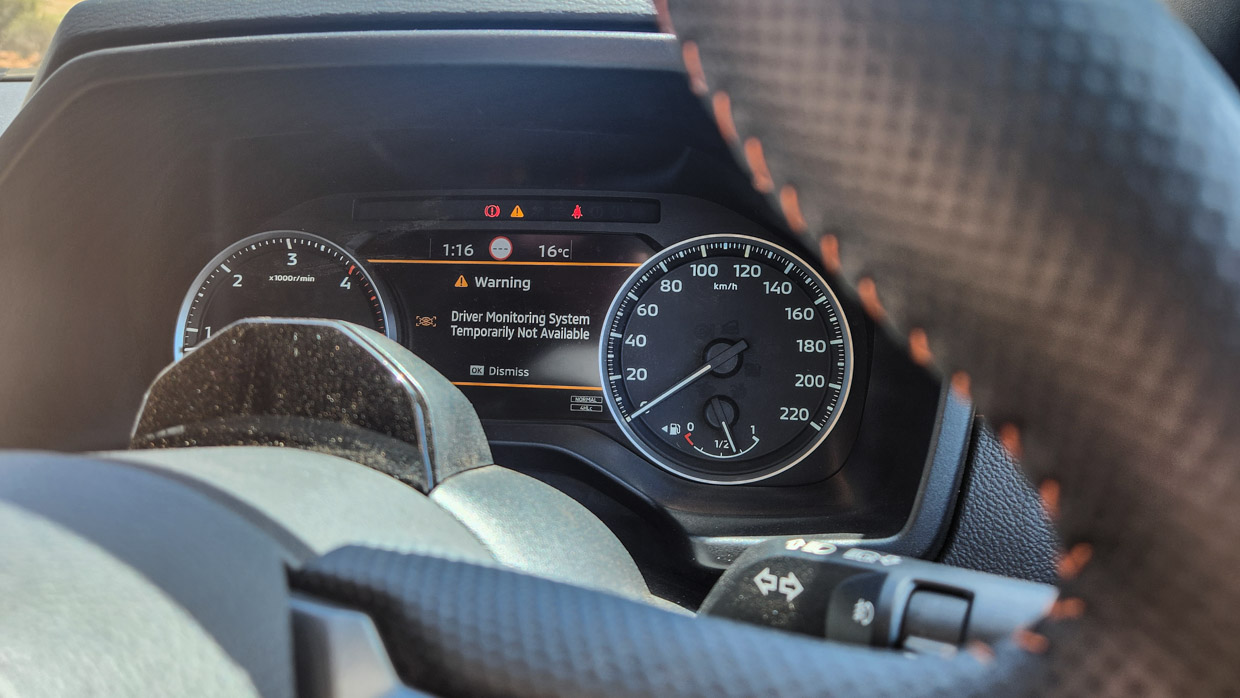
It also still sounds off for absurd reasons, like checking your speed or looking out of the side window which, last time I checked, is still considered driving!
Again, by sounding an alert and flashing visual warning in the instrument cluster you’re often taking your eyes off the road for longer than you would be if there was no warning at all.
During a recent trip from Melbourne up to Ballarat, in regional Victoria, my wife also discovered that the system perceives her singing along to Tay Tay hits as behaviour indistinguishable from yawning and thus alerted her that she is fatigued and should pull over and rest. Hilarious, really.
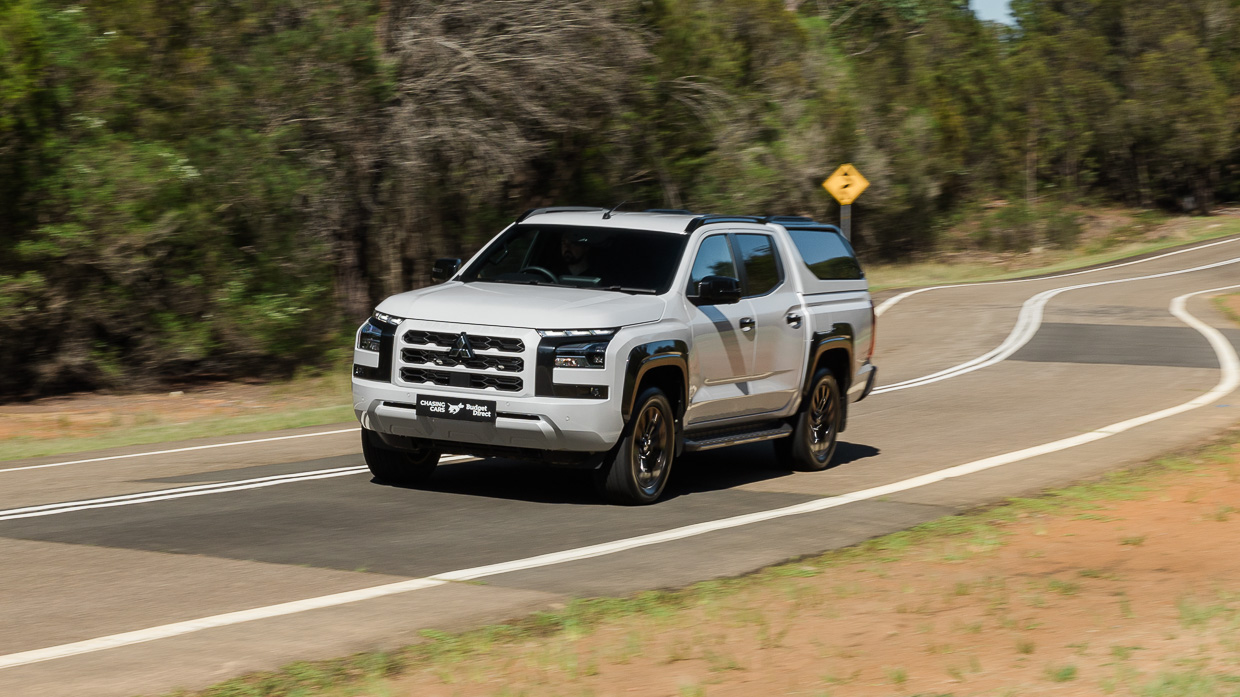
Despite my rage, I do believe this technology has a place, at least in theory. Fatigue is a huge killer on our roads and I’d argue a lack of attention is even more so.
Just take a quick scan around you in traffic and you’ll observe a staggering amount of people who feel perfectly comfortable blindly hurtling a two-tonne piece of metal down the road while their heads are buried in the phone on their lap.
Stricter rules for driver monitoring systems were introduced in 2023 which meant Mitsubishi was forced to adopt the technology in order to earn the five stars necessary to appeal to both family buyers and fleet buyers.
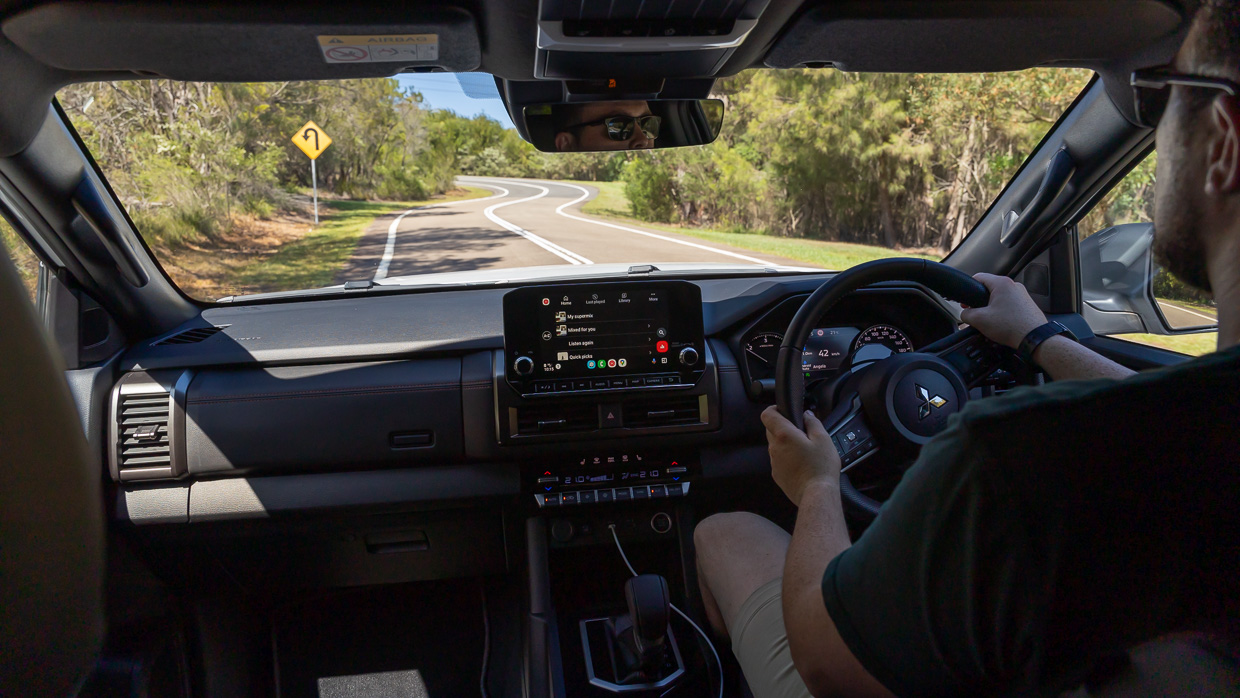
It’s unfair, really, as this means that the likes of the Ford Ranger and Volkswagen Amarok are waltzing around the place with five stars beaming off their chest despite being tested without this latest tech. So to the casual observer, they appear as safe as each other.
However, since Mitsubishi has passed under these latest protocols others have followed such as the new Toyota Land Cruiser Prado, which has earned little to no criticism for its driver monitoring system, showing that it can be done right. It’s just not there yet.
And here is where my patience and understanding for the Triton’s driver monitoring system has run out.
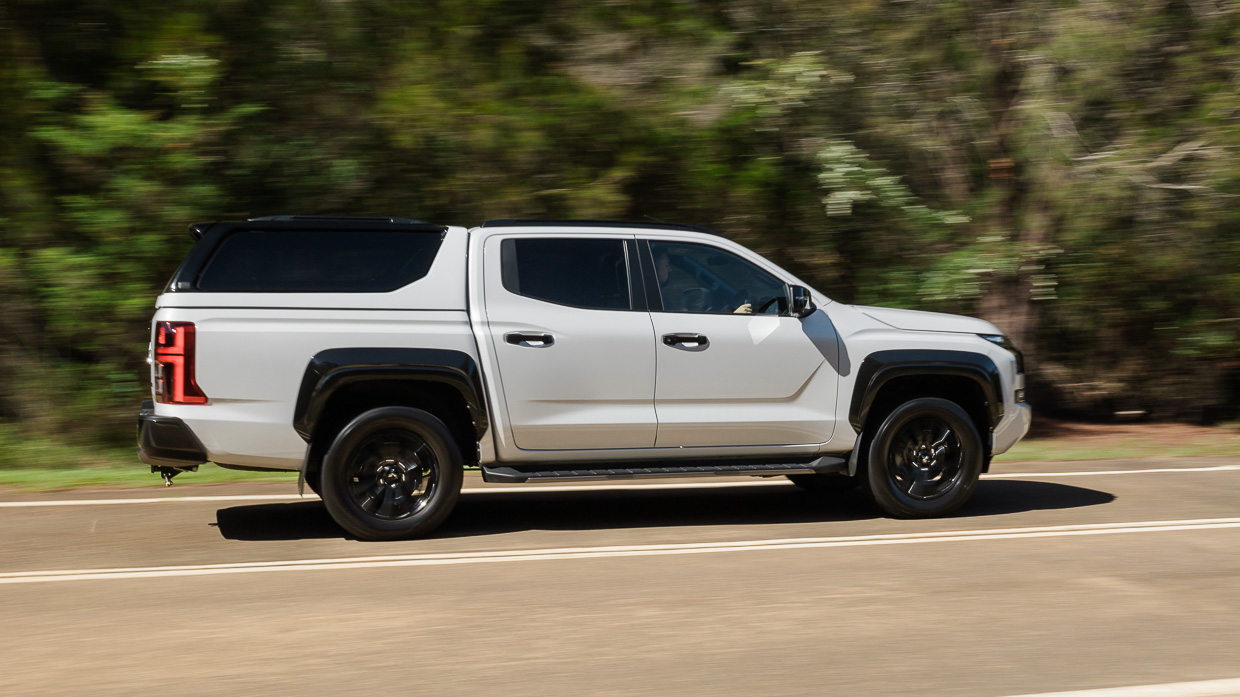
I’m of the strong belief that more cars should have this driver monitoring system to combat the flippant manner in which many drivers seem to observe our roads while driving but less is truly more when it comes to how these systems work.
By scaling back the beeps and honing in on the accuracy of the offending moment, such as detecting smartphone usage but not speedo monitoring, drivers will be more likely to take the feedback on board and not write off the warning as a pointless nuisance.
Perhaps this poor calibration is expected as Mitsubishi was one of the first to integrate the system under the new rules. We’ve seen this mayhem previously with Isuzu when they added lane keep assistance to the D-Max to score five stars under ANCAP’s 2020 protocols.
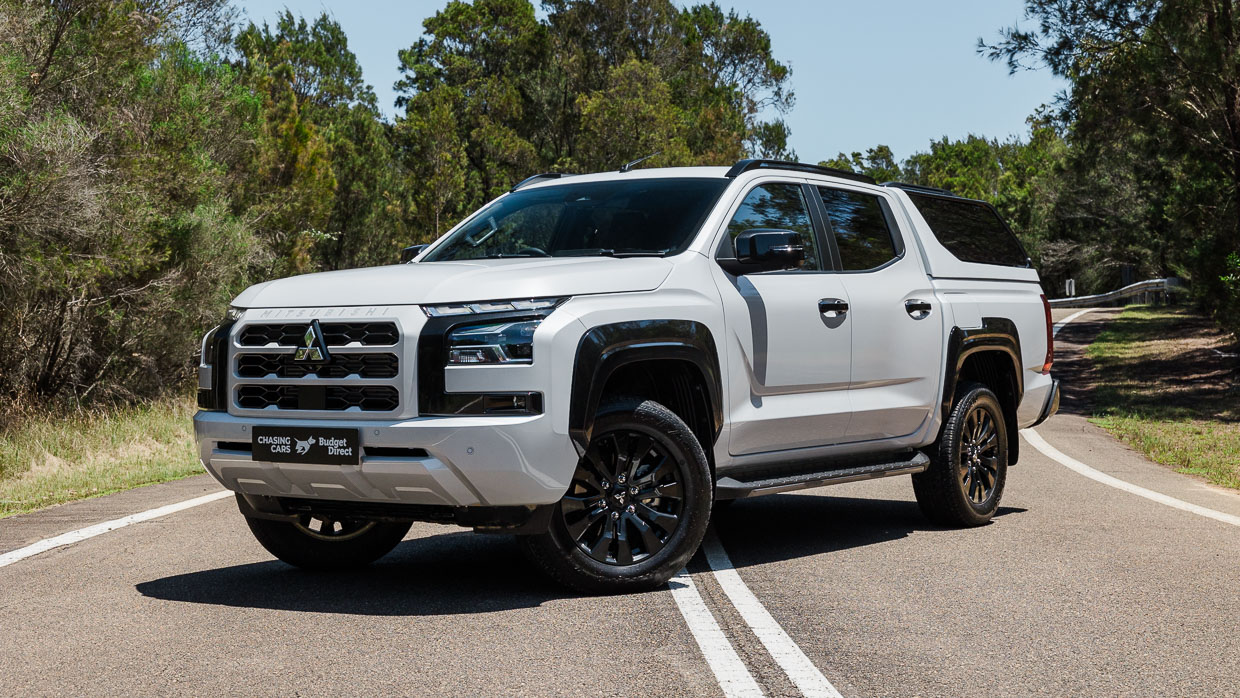
It achieved that goal but the system was wildly intrusive, prompting further efforts by ANCAP to actually test how these systems work in the real world and not just on a private road. And yes, I am serious about that last point.
The next step for Mitsubishi here is to repeat what Isuzu did with its lane keep: make the system much easier to turn off while also making it more accurate and less intrusive so it only sounds a warning when actually necessary.
A new city, a new adventure and a new ute to explore it. How fitting, really. But what else lies ahead for our six-month test?
The move to “Mexico” (Victoria), as my Sydney colleagues affectionately call it, has been a long-awaited change for my family and me, marking a new chapter of our lives in the most literal sense. I anticipated the better coffee and improved appreciation for AFL, but I didn’t expect this place to be so bloody beautiful.
Sitting on the border of outer suburbia and the countryside near Melbourne’s main airport, Tullamarine, the cascade of rolling green hills, skittish kangaroos and sheep grazing on farmland that surround my home all convey the same thing: This…is ute territory.

I love you Sydney, but as an Adelaide boy, the place was a bit crowded for my taste and a one- to two-hour drive out of suburbia to the nearest decent 4WD track a happy weekender does not make.
But it won’t just be all sunshine and long weekends away for this Triton (though those will be woven into the fabric don’t worry) as the ute will also be assuming family duties – a newer task asked of the modern ute but one that is undoubtedly critical in the modern age.
This year I was also lucky enough to welcome my second born into the world, which is bad news for my staffy Buddy who, in his nine-year vintage, has finally worked his way in my vehicle-driven life all the way from the front seat to the rear tray.
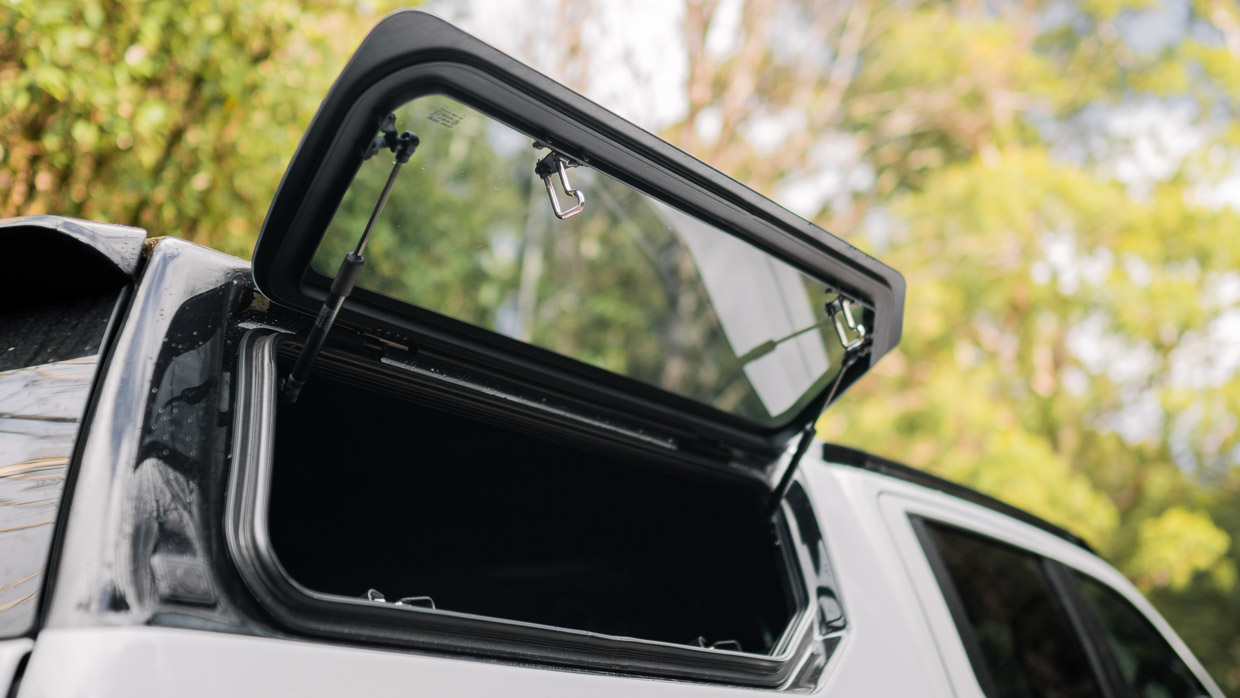
It was for this reason, along with preventing obvious theft of prams and such, that we opted for a canopy for the Triton. And right off the bat I’ll tell you that I’ve been impressed with what Mitsubishi has to offer here.
Designed right here in Australia, and charging $5100 for the privilege, you can find cheaper canopies but I would be seriously surprised if you could find one with a longer warranty; with the lid covered by the Diamond brand’s full-fat 10-year warranty.
Naturally, it ties in with the central locking system and features a trio of actuators on the side to pop open the main hatch and the side windows. It’s just a pity that these controls aren’t mounted on both sides though, it would save me some walking.
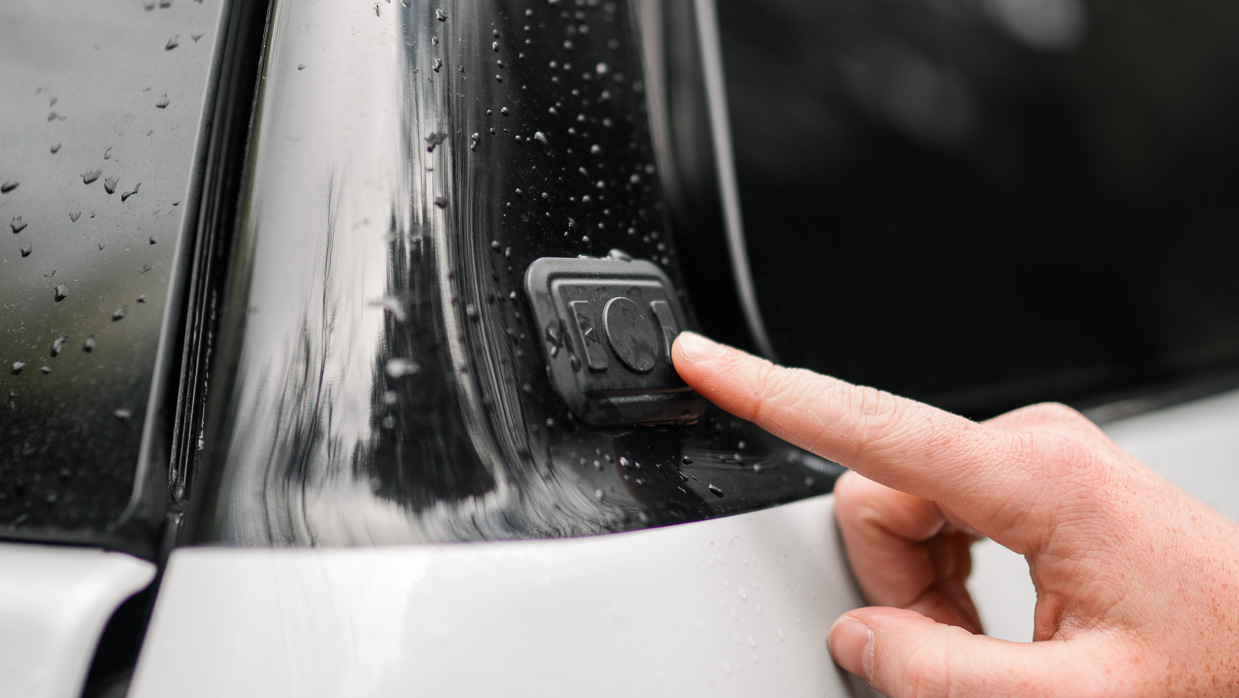
The rest of the ute it’s attached to has also left a pretty good impression so far in my first few weeks of testing, which have largely been restricted to around-town duties and the odd venture up the mountain for a bike ride while I’ve been on parental leave.
The Triton is a brutish thing, even with the comprehensive advancement of this latest generation, the 150kW/470Nm 2.4L twin-turbo-diesel makes itself known inside the cabin and is probably one of the louder engines in this segment. Personally I find that a bit endearing but we’ll see if I feel quite so attached after an eight-hour interstate trek in the coming months.
With some serious rainstorms smashing the state in recent weeks, I’ve also appreciated the surety of the brilliant Super Select ll full-time four-wheel-drive system that keeps the Trition properly stuck to the road as well as it does the dirt, unlikely other tail-happy part-time systems found on rivals such as the Isuzu D-Max.
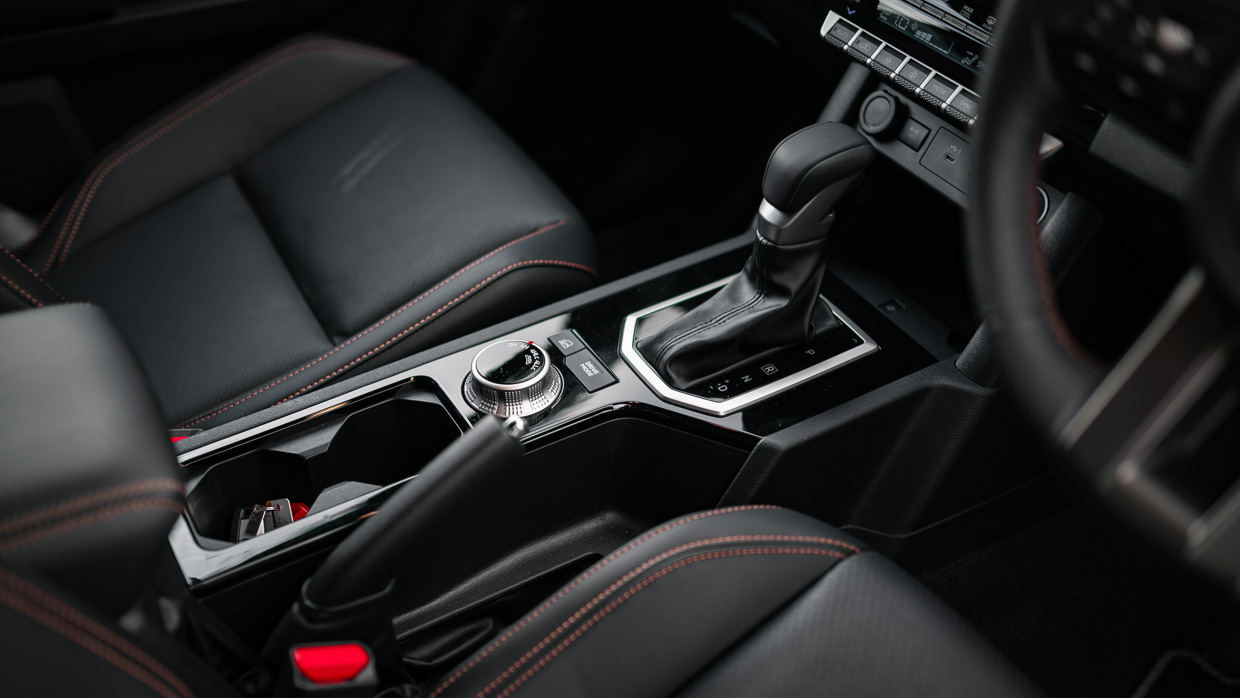
However, it hasn’t taken me long to note two concerns: the first is the ‘sticky’ six-speed automatic, which seems to leave the torque converter locked up for far too long between some shifts, primarily when lazily accelerating from third to fourth, though I’ve also noticed it from second to third at times.
Given this is the exact same transmission as fitted to the previous Triton and the D-Max, this is truly bizarre but hopefully with a few thousand kilometres into this new ute, the drivetrain might bed itself in.
The second issue is to do with the rear brakes, which are still inferior drums in what is a slightly irresponsible move by Mitsubishi given this generation has raised the payload and with it the towing capacity from 3.1 to 3.5 tonnes.
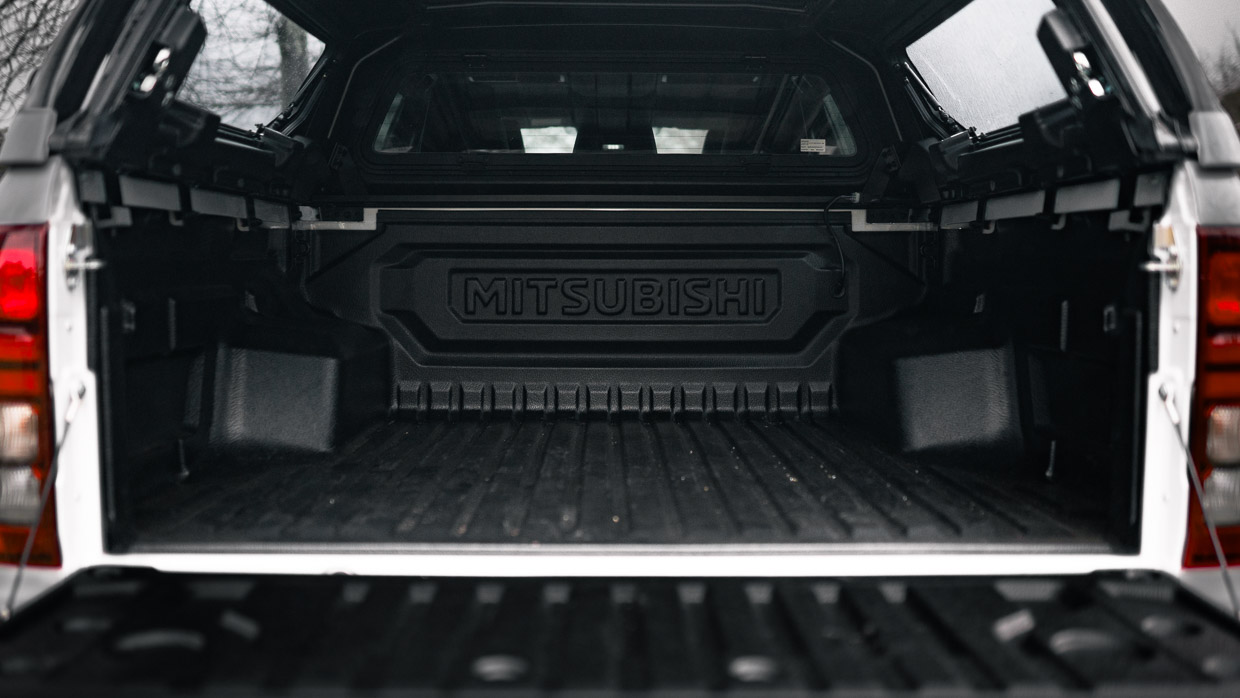
Naturally, we plan to conduct tests of both the impressive 1030kg payload and the bolstered towing capacity in the coming months along with quite a bit of 4WDing so we can really find out just how well-rounded the new Triton is.
The new Triton might be a bit of a brawler on the surface but to me, there is reason to consider this ute if its on-paper credentials translate to the real world, it’s not the most refined but it features gear like full-time 4WD with a locking centre diff that rivals like Ford and Toyota either can’t or won’t offer for the same price.

At $63,840 before on-roads, buyers of the flagship Triton GSR would be lucky to snap up a midspec Ford Ranger Sport with the lesser 2.0TT engine ($66,140) or the Toyota Hilux SR5 ($60,250), without many of the mechanical or luxury frills the Triton offers as standard.
So does the Triton live up to the promise? Time to get to work.
Utes are a big deal in Australia, with the light commercial segment they fall under our second-most popular by sales. Such a thing can’t happen without a vehicle being versatile in nature and versatility is the calling card of utes, particularly in dual-cab form, which has increasingly been assigned to family and adventure duties in recent years.
The outgoing MR Triton had a strong following that rightfully praised its mountain-goat-like off-road capability and sheer toughness. However, the old gen was too compromised in too many areas, with rubbish on-road manners, a below-average towing capacity and pokey, plastic interiors.
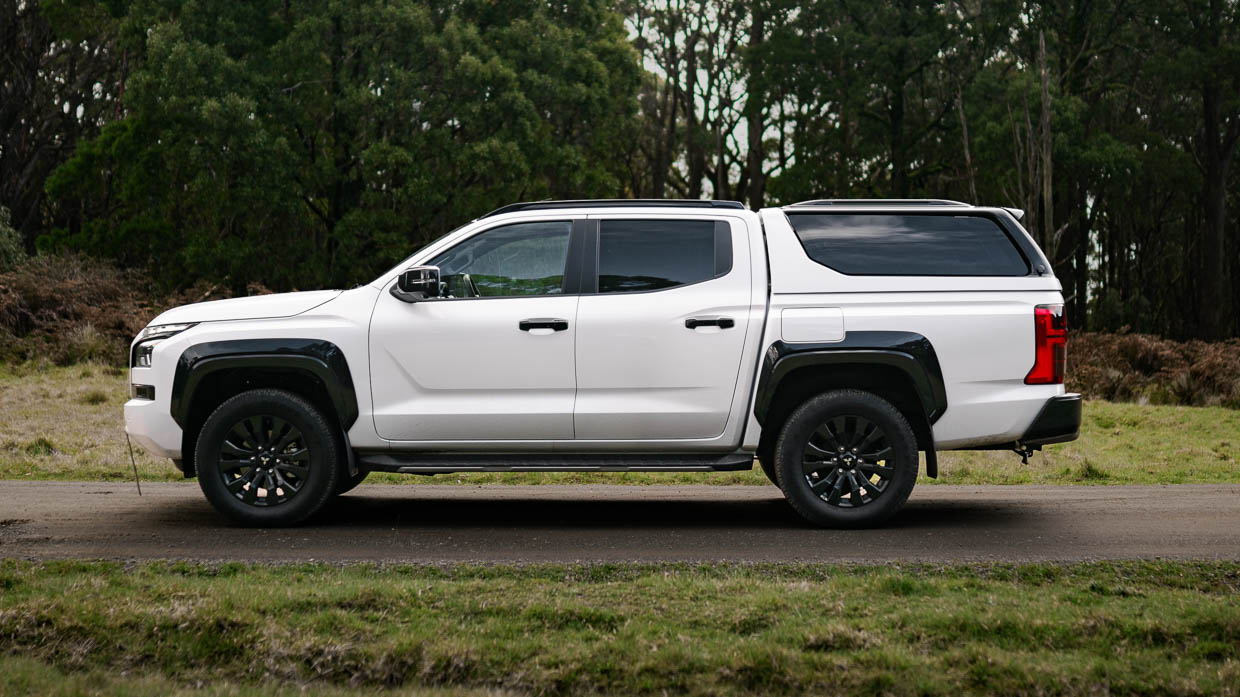
At launch, we sampled the new MV Triton, which the diamond brand created with the intention of being a far more versatile machine. And we came away impressed, with caveats around some still concerning ride quality traits and a nagging driver monitoring system that made me want to pitch the damn thing into the nearest tree.
But with so many areas of capability to test such as payload, towing, family duties, off-road ability and reliability, the arrival of the latest chapter to the storied Triton nameplate required a genuine long-term tenure to access effectively and that’s exactly what we’ll be doing over the next six months.
At $59,090 before on-road costs, the 2024 GLS variant of the Triton lineup is the first grade geared more towards family folk, above the more agricultural GLX and GLX+. But once you tack on the almost mandatory Deluxe Pack ($1500) you’re not far from the $63,840 flagship GSR which really does look the business.
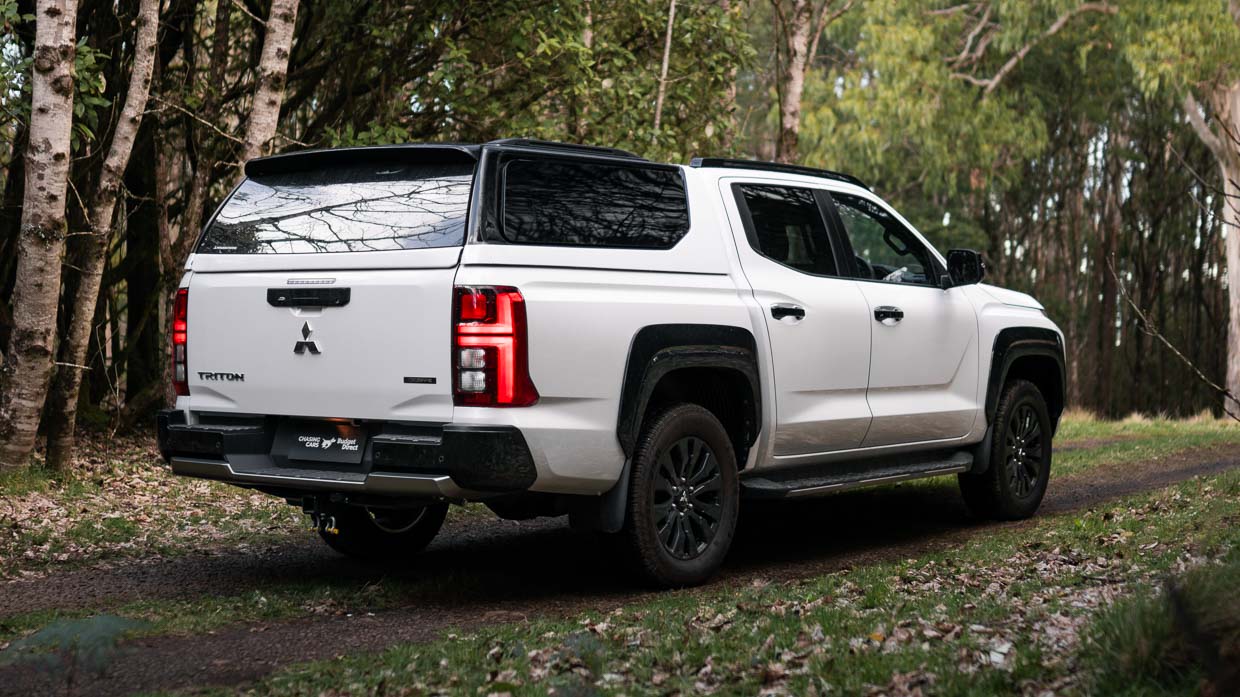
While not as popular as the volume-selling GLS, top-spec grades like the GSR are where the market is trending and we think the slew of black accents makes the busy styling (particularly at the front) look far more sorted, tough and handsome; like a friendly publican who wins most, but not all of the fights he gets tangled up in.

A standard GSR also tacks on the following:
Mitsubishi recently announced an MY2024.5 update for the Triton that re-introduces the GLX-R grade equipped with a damped tailgate as standard, which is also now found on the GLS and GSR grades. All other specifications, including price, are the same, however.
For our long-term test car, we’ve gone with a GSR finished in a fantastic combination of White Diamond paint (+$200) and the two-tone black effect brought on by this flagship grade.
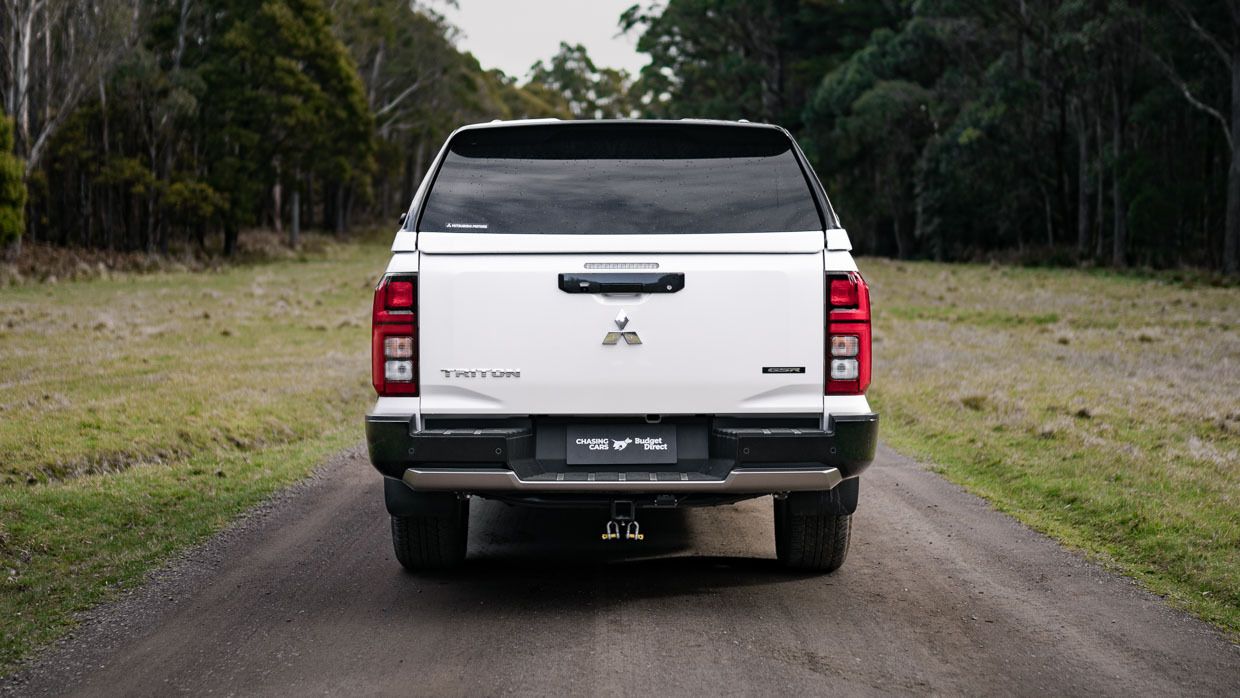
Our Triton is also fitted with a Mitsubishi genuine accessory canopy, which is designed right here in Australia and will set you back $5100 fitted. A tow bar kit ($1450) with an accompanying Redarc integrated brake controller ($850) is also fitted.
All this means the total driveway price in NSW is around $73,590 driveaway, which ain’t bad for a kitted-out top-spec ute.
Key specs (as tested)
About Chasing cars
Chasing Cars reviews are 100% independent.
Because we are powered by Budget Direct Insurance, we don’t receive advertising or sales revenue from car manufacturers.
We’re truly independent – giving you Australia’s best car reviews.
The estimate provided does not take into account your personal circumstances but is intended to give a general indication of the cost of insurance, in order to obtain a complete quote, please visit www.budgetdirect.com.au. Estimate includes 15%^ online discount.
^Conditions Apply
Budget Direct Insurance arranged by Auto & General Services Pty Ltd ACN 003 617 909(AGS) AFSL 241 411, for and on behalf of the insurer, Auto & General Insurance Company Limited(ABN 42 111 586 353, AFSL 285 571).Because we don’t know your financial needs, we can’t advise you if this insurance will suit you. You should consider your needs and the Product Disclosure Statement before making a decision to buy insurance. Terms and conditions apply.
Indicative quote based on assumptions including postcode , 40 year old male with no offences, licence suspensions or claims in the last 5 years, a NCD Rating 1 and no younger drivers listed. White car, driven up to 10,000kms a year, unfinanced, with no modifications, factory options and/or non-standard accessories, private use only and garaged at night.
^Online Discounts Terms & Conditions
1. Discounts apply to the premium paid for a new Budget Direct Gold Comprehensive Car Insurance, Third Party Property Only or Third Party Property, Fire & Theft Insurance policy initiated online on or after 29 March 2017. Discounts do not apply to optional Roadside Assistance.
2. Discounts do not apply to any renewal offer of insurance.
3. Discounts only apply to the insurance portion of the premium. Discounts are applied before government charges, taxes, levies and fees, including instalment processing fees (as applicable). The full extent of discounts may therefore be impacted.
4. We reserve the right to change the offer without notice.